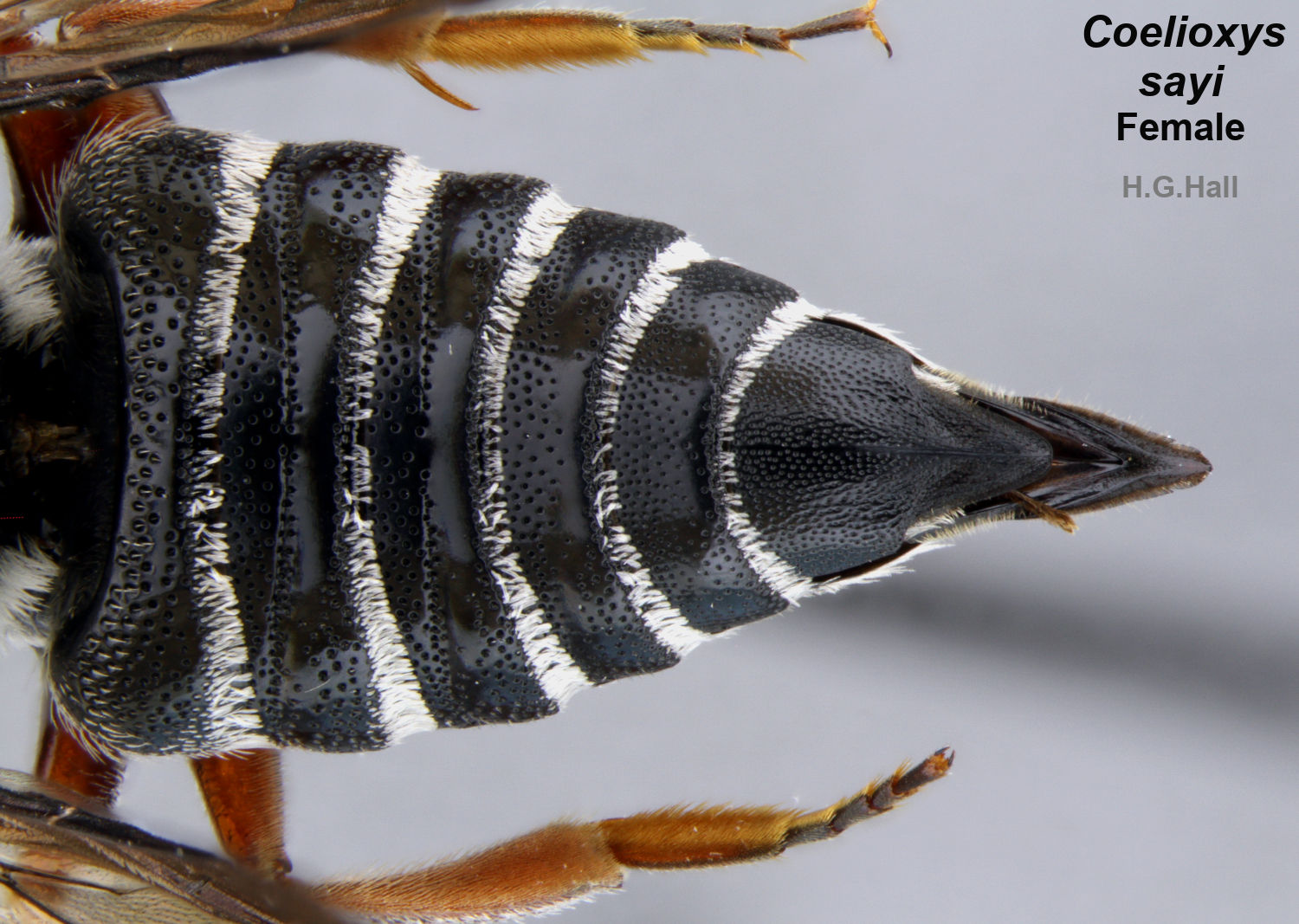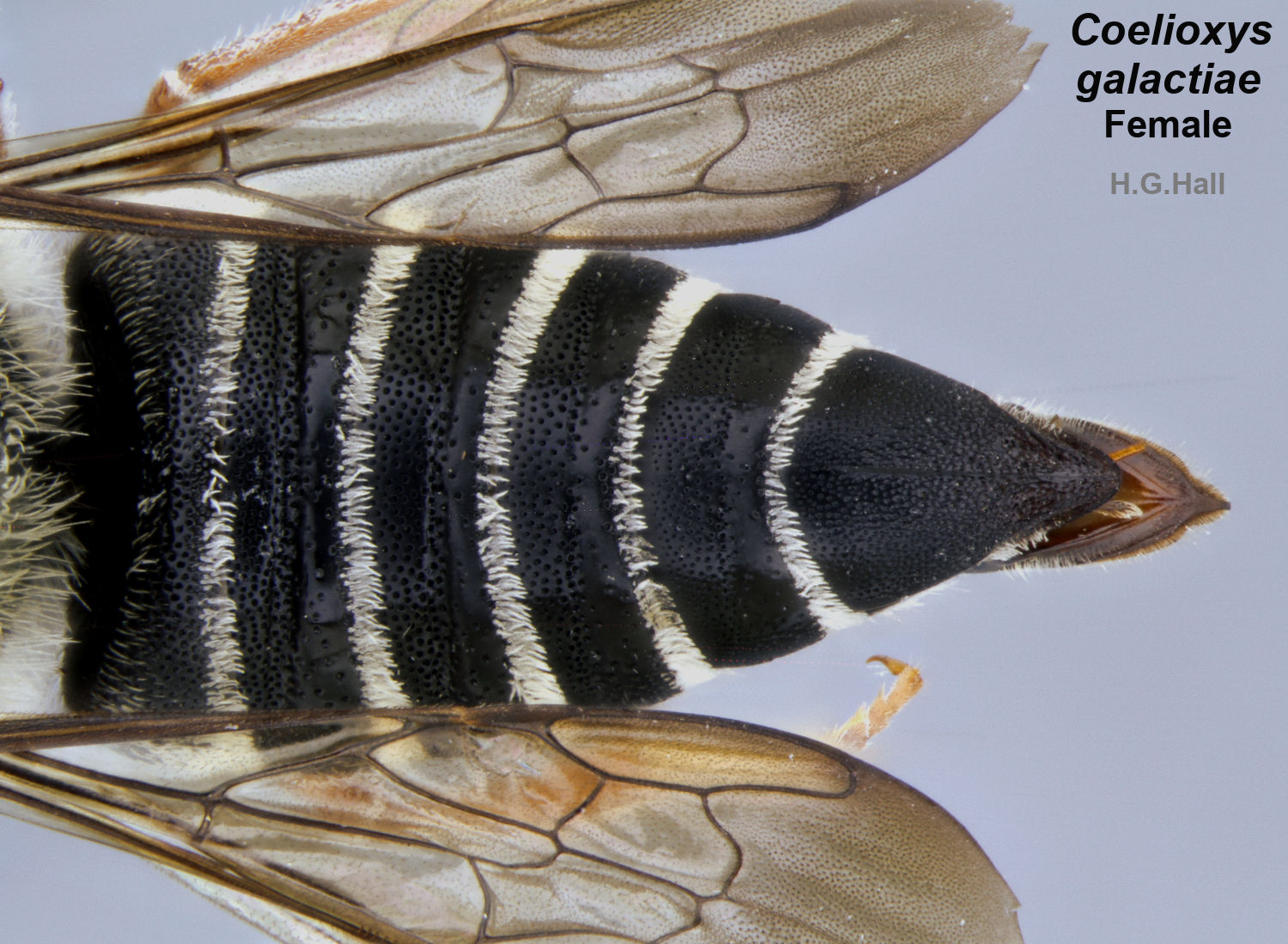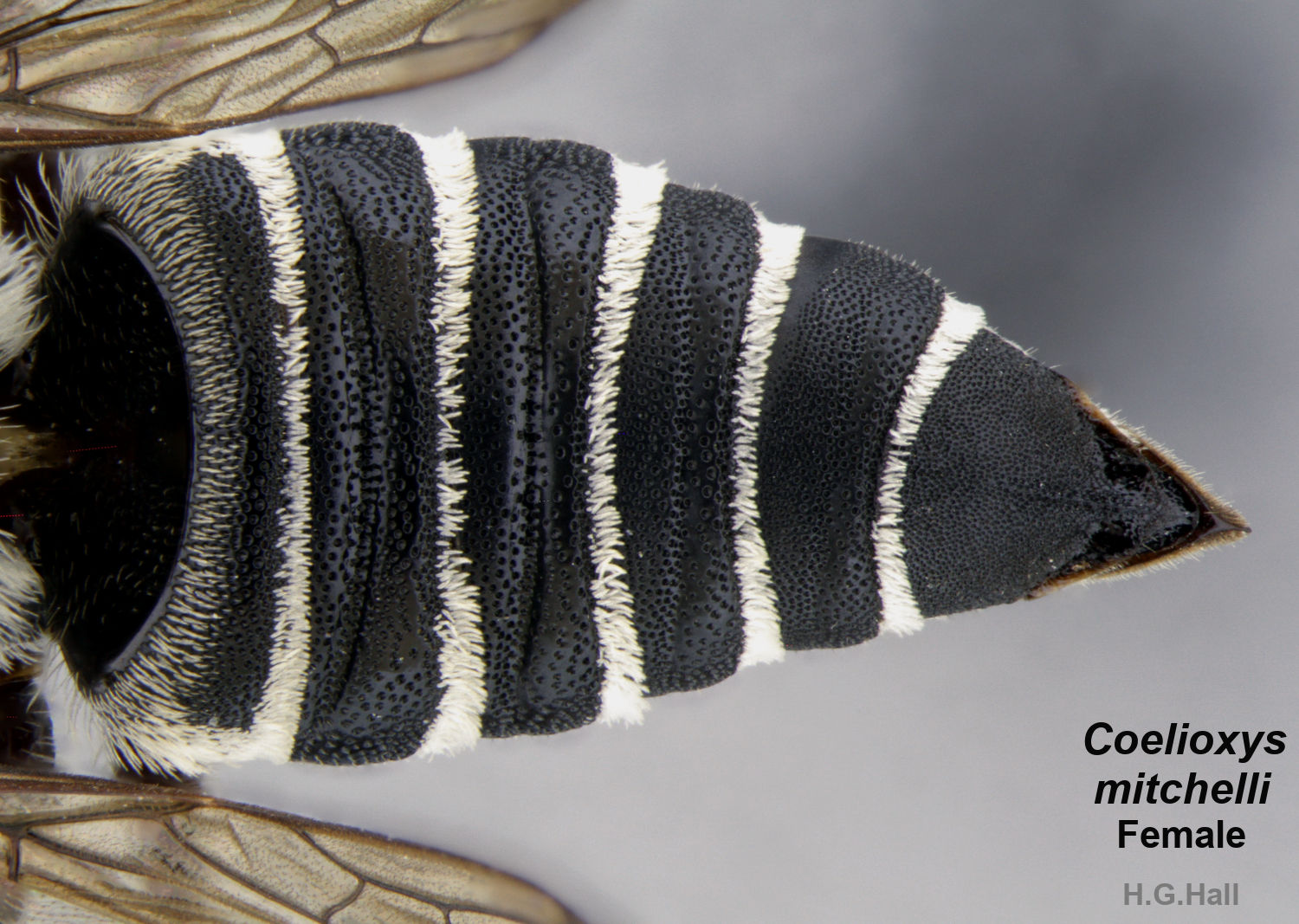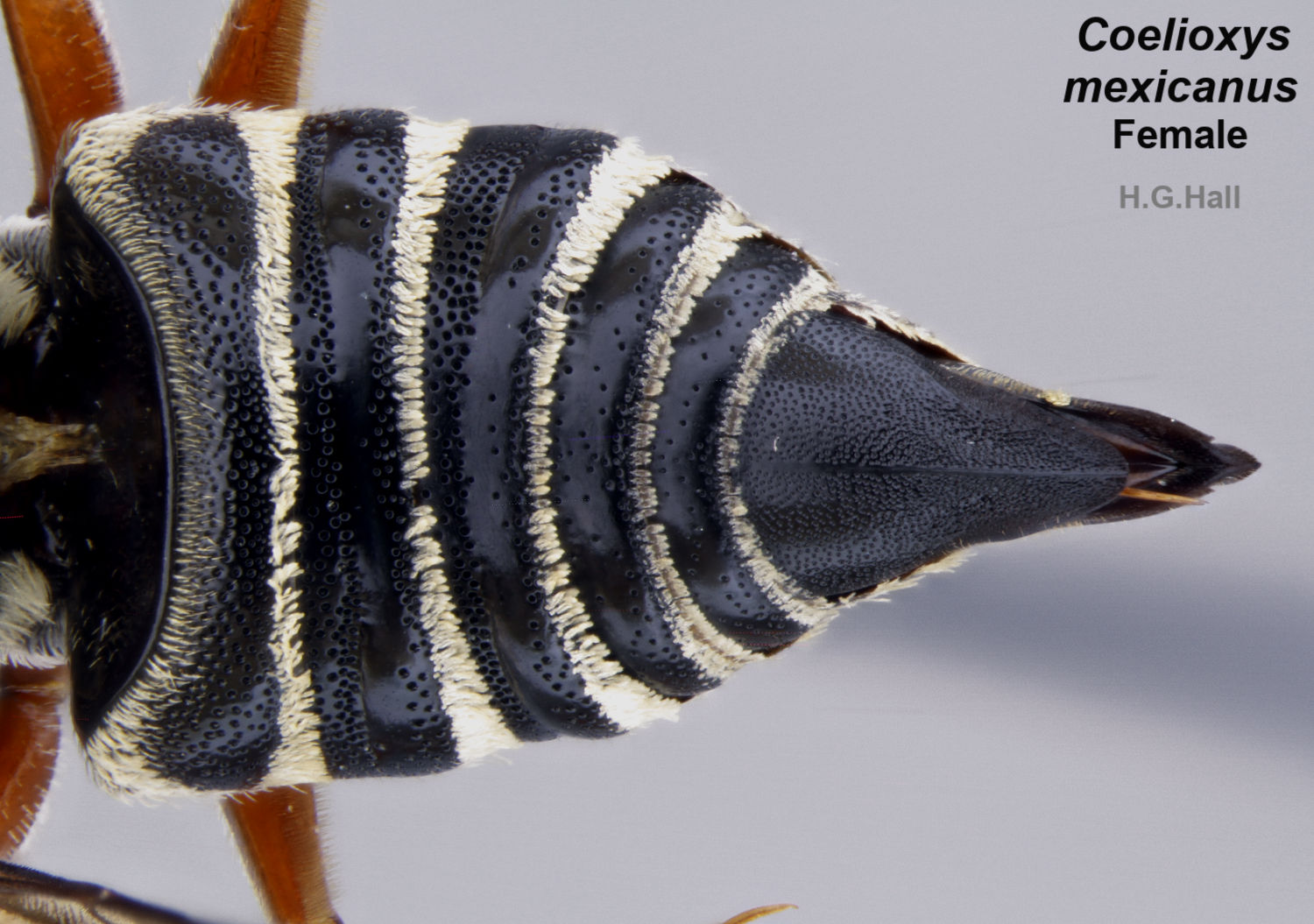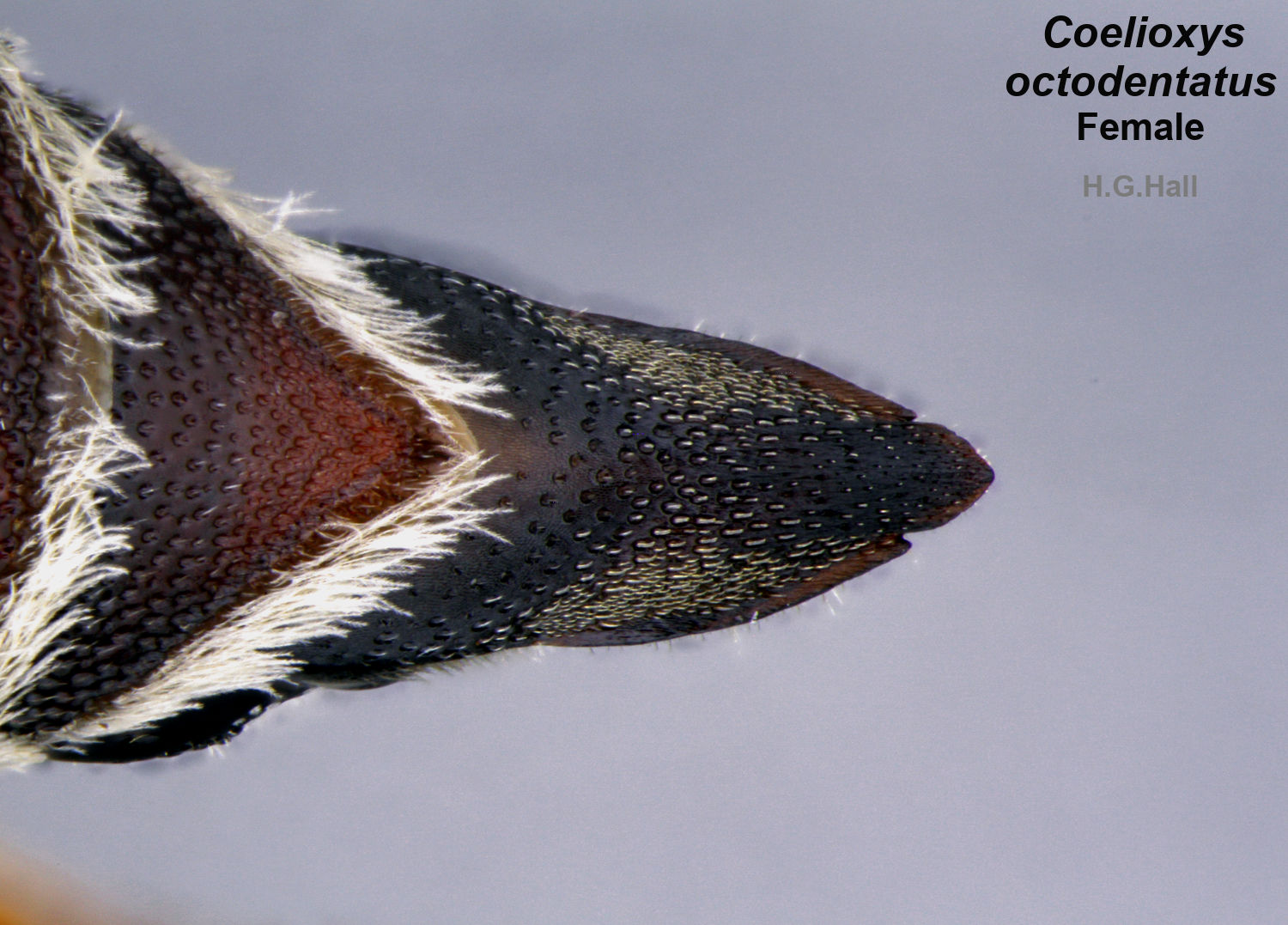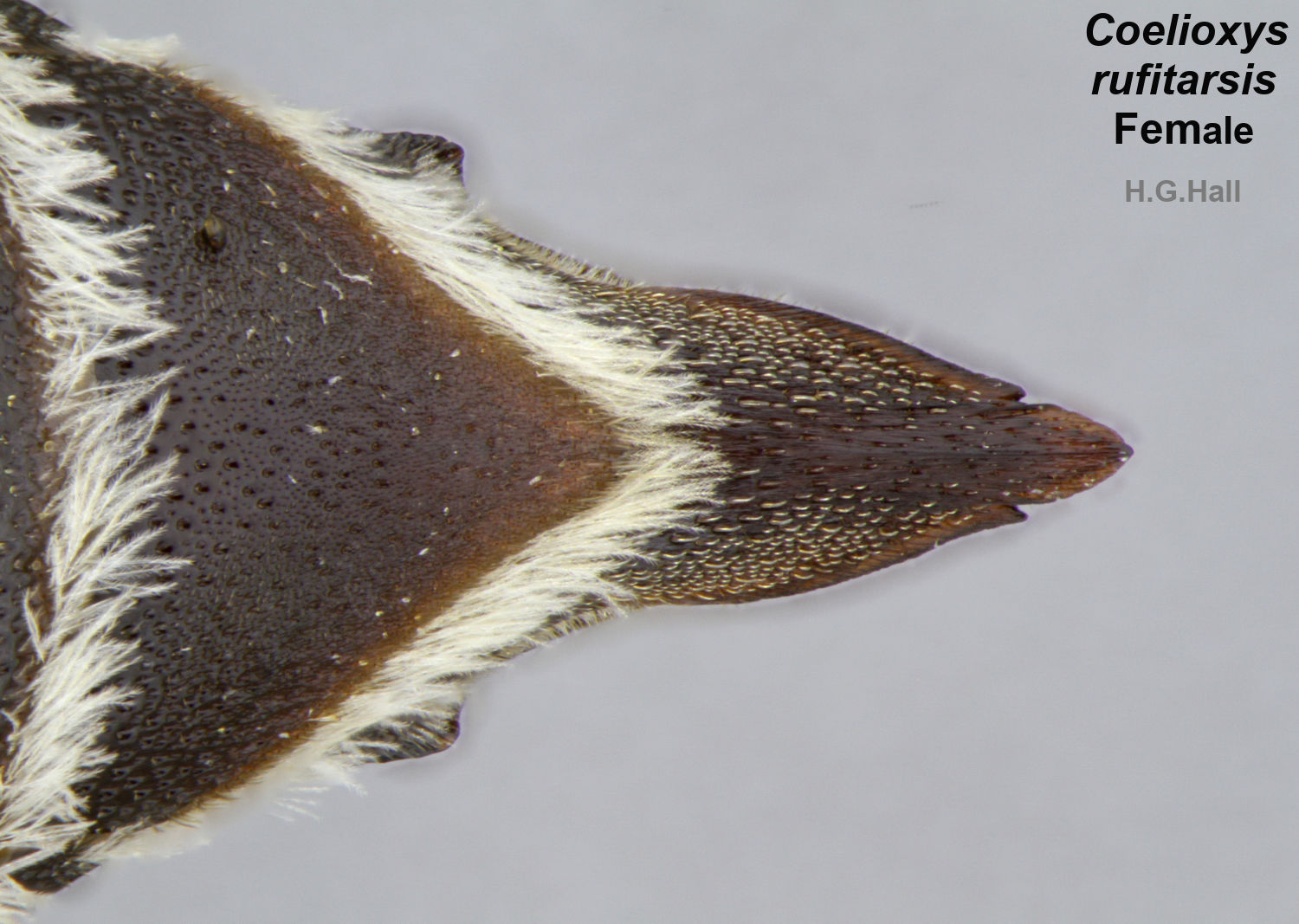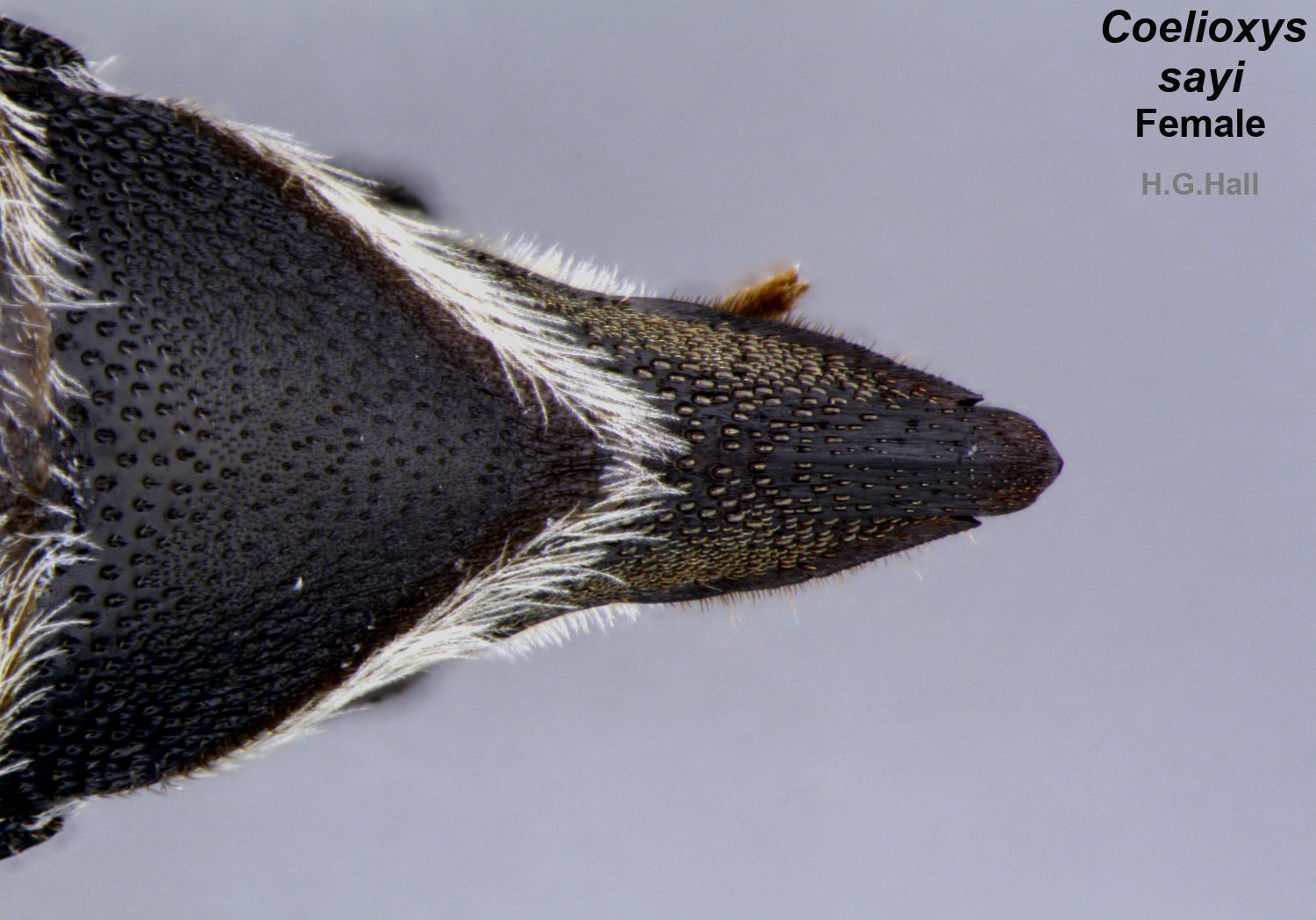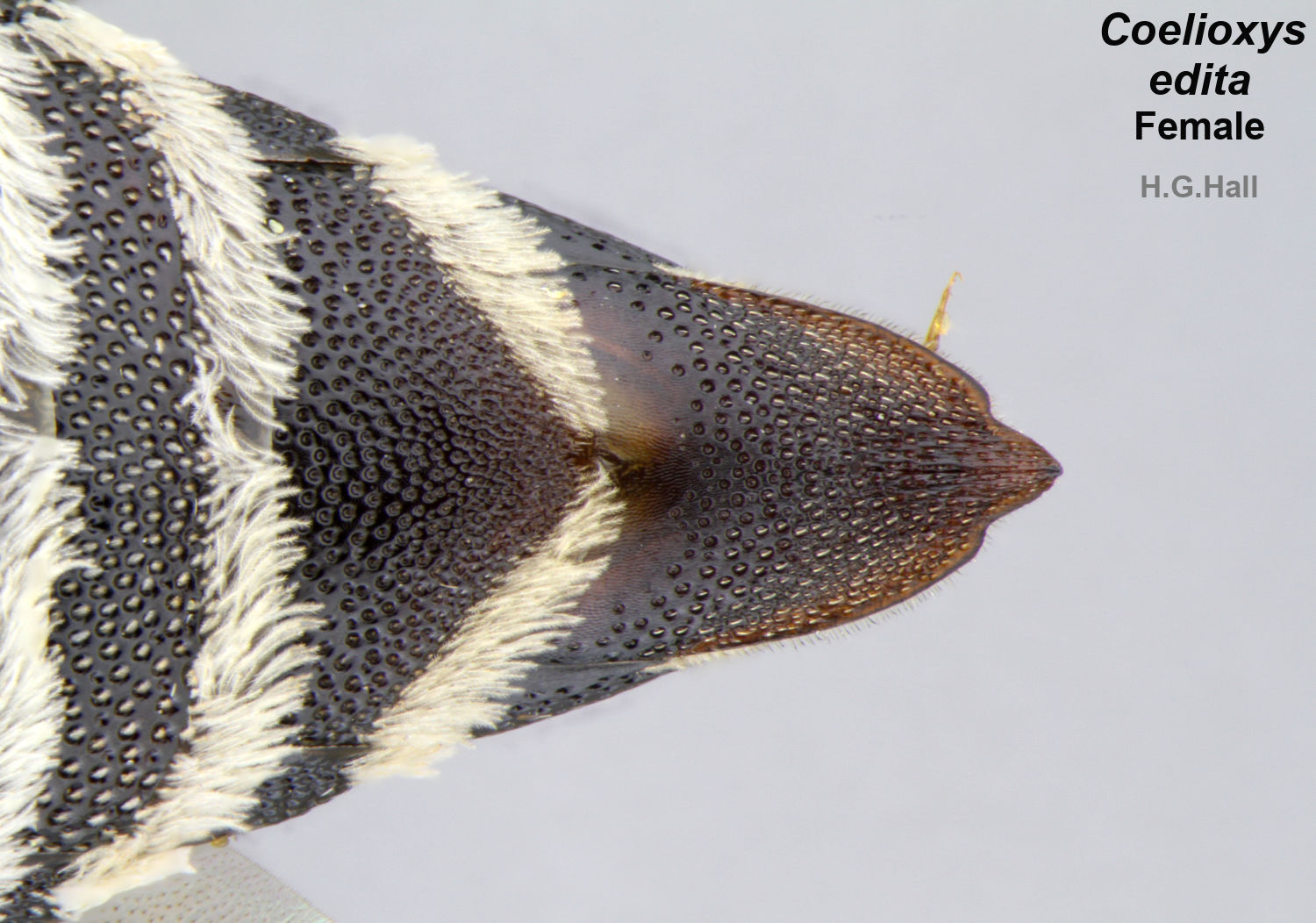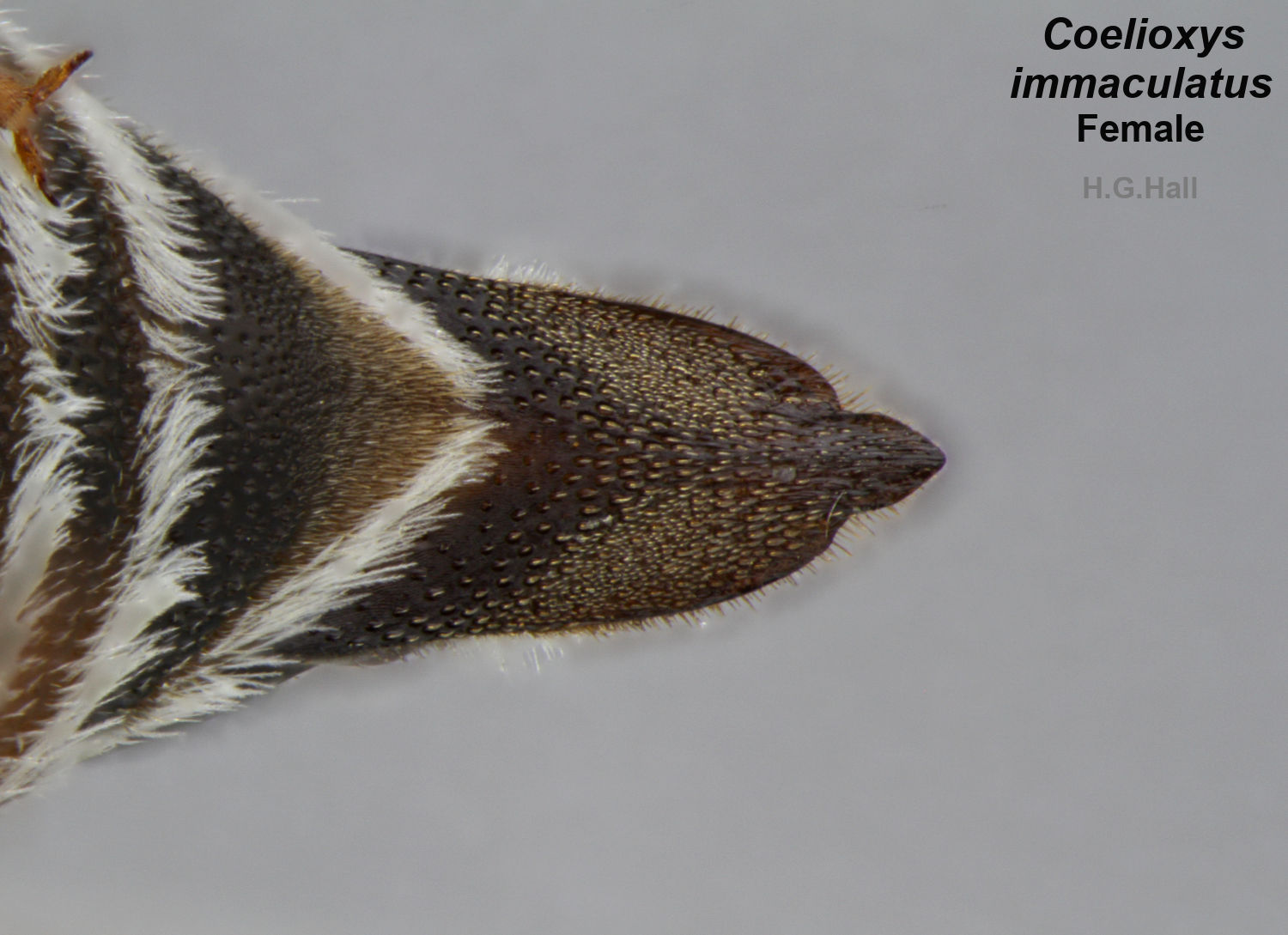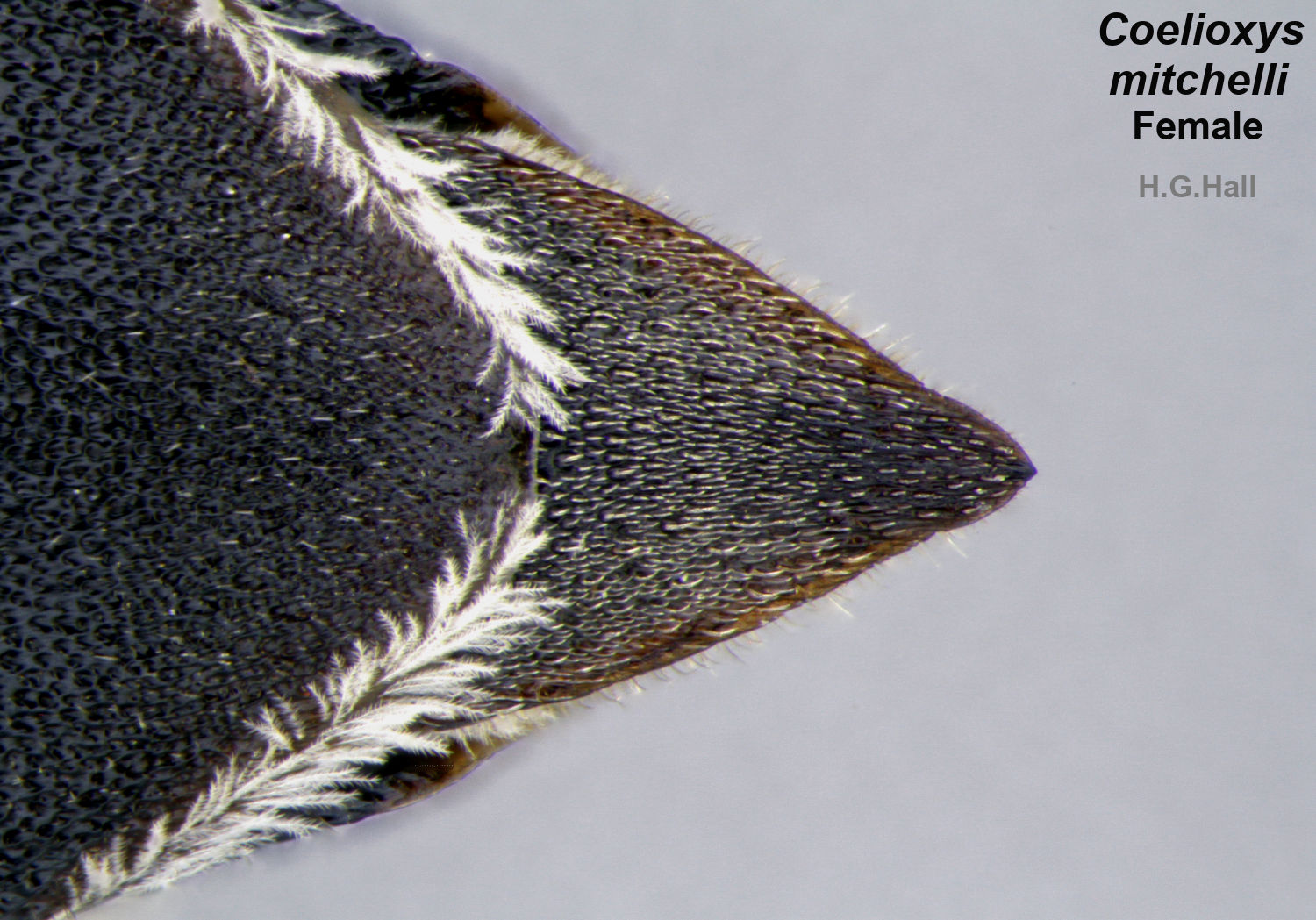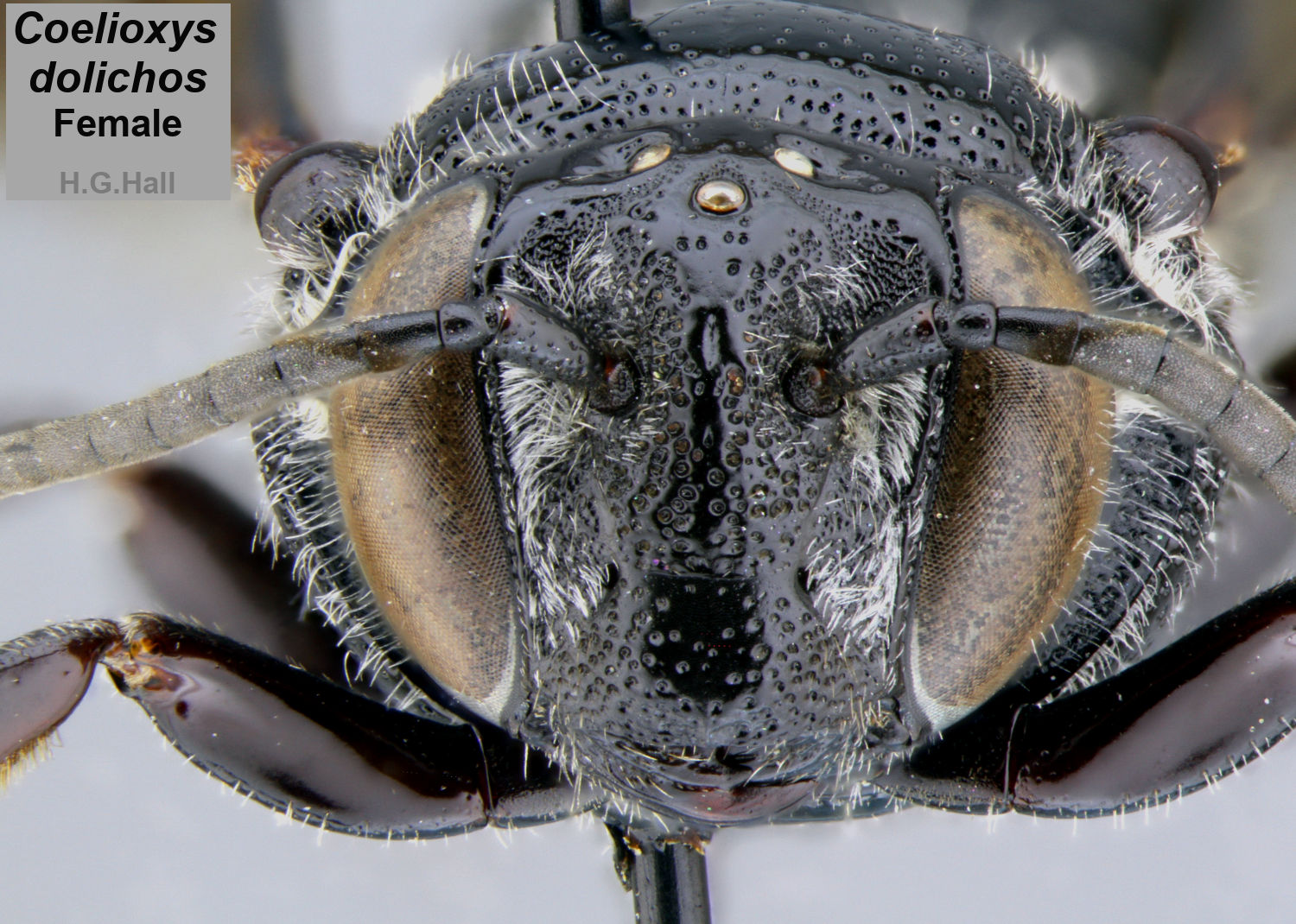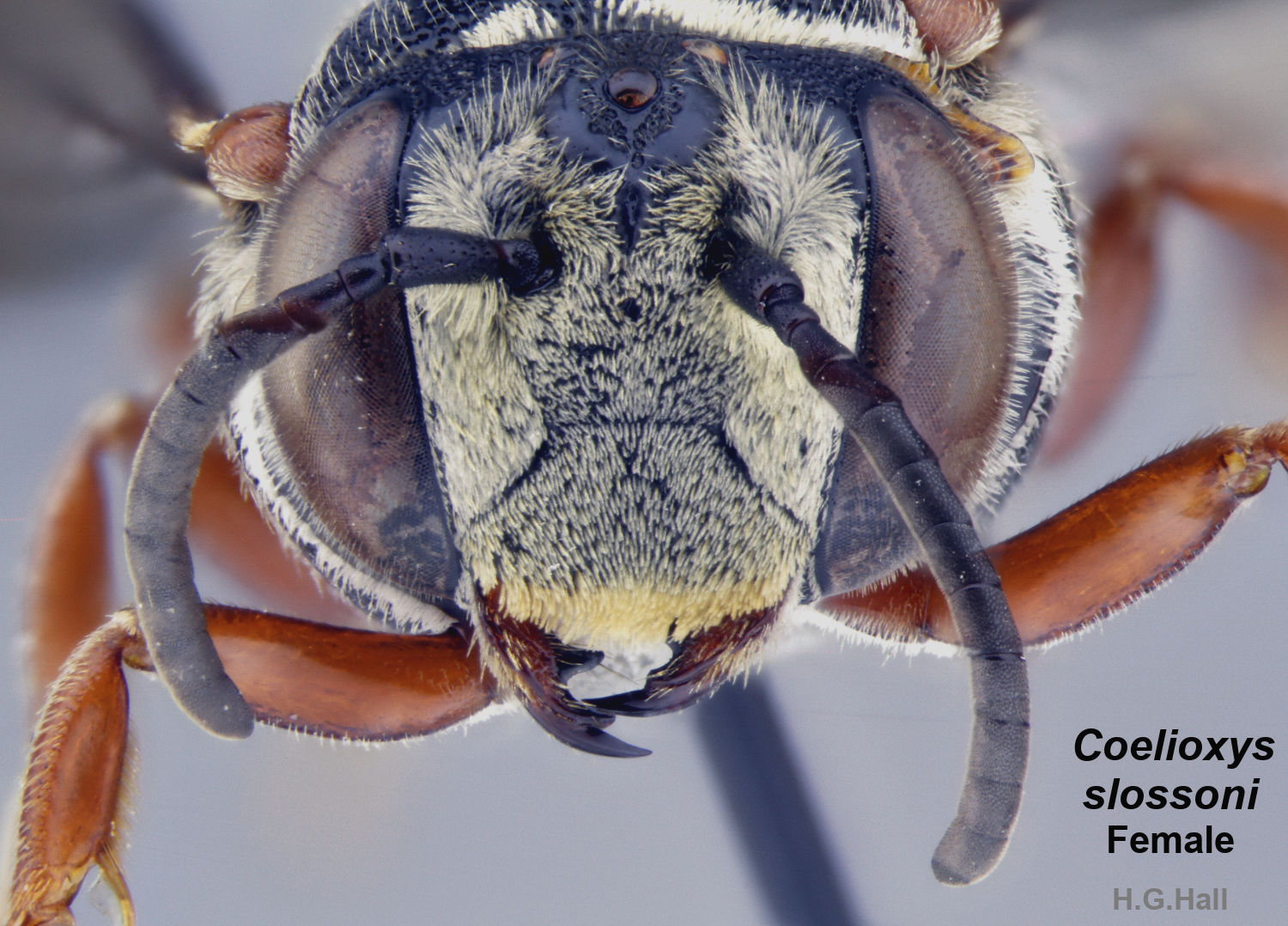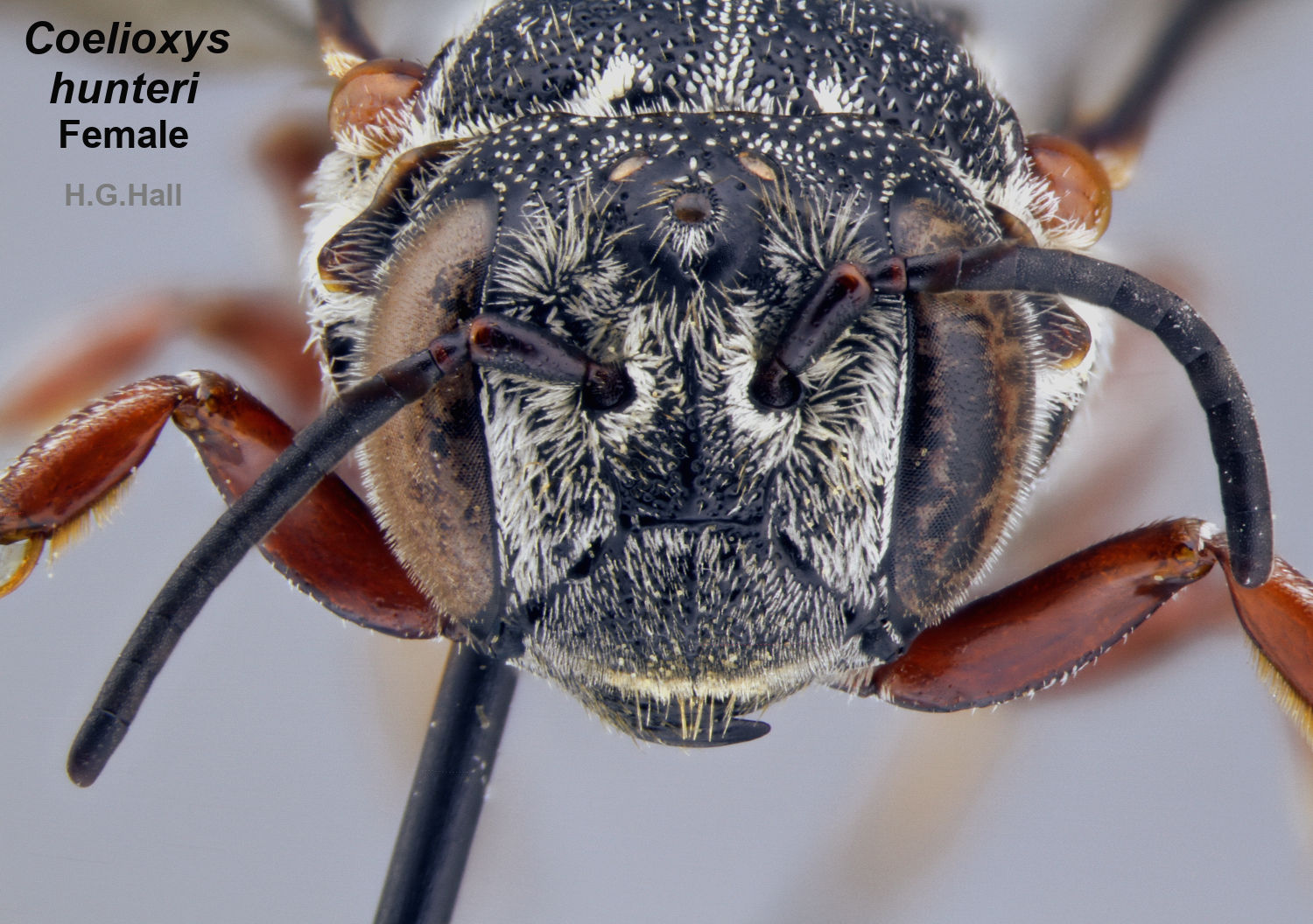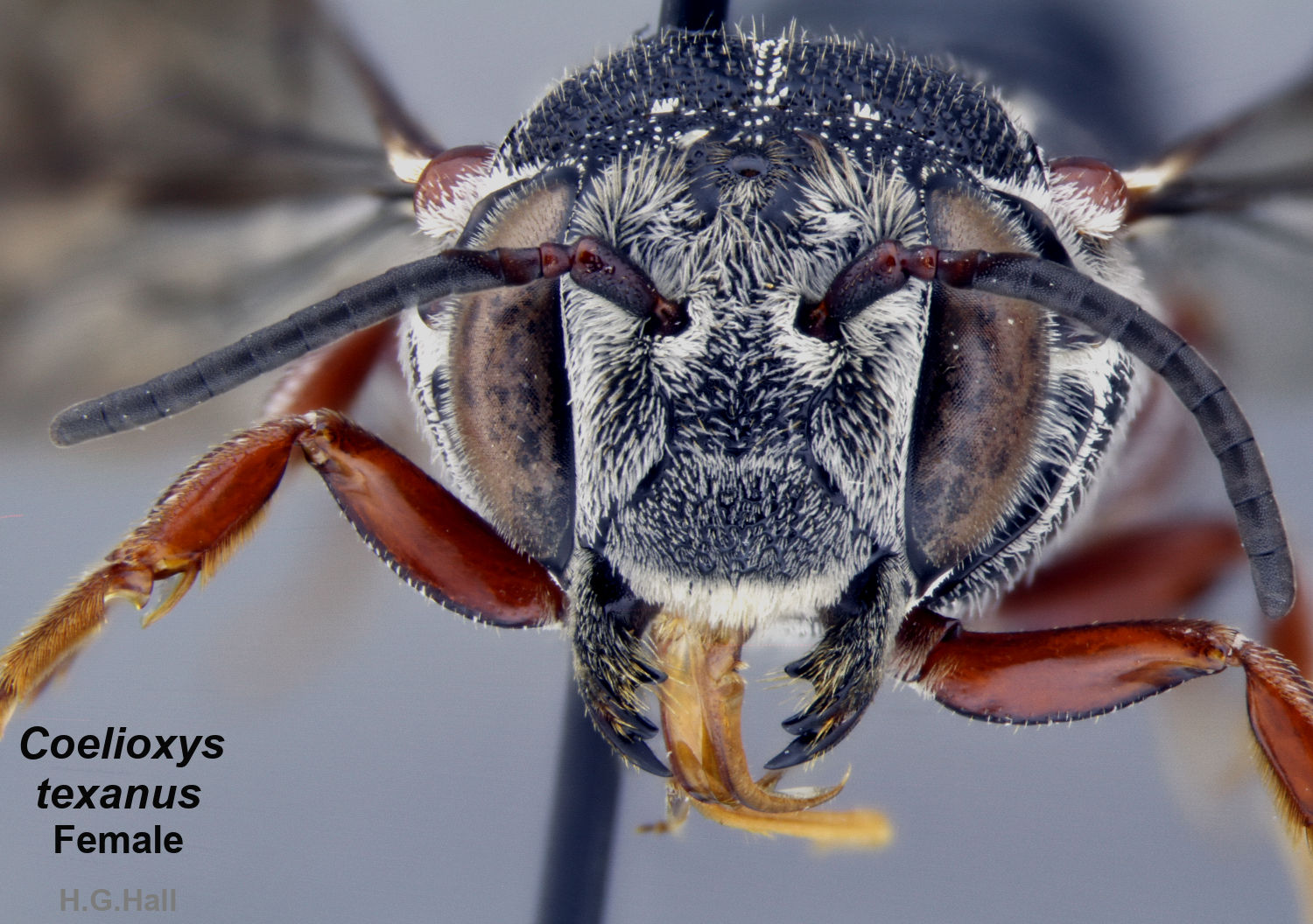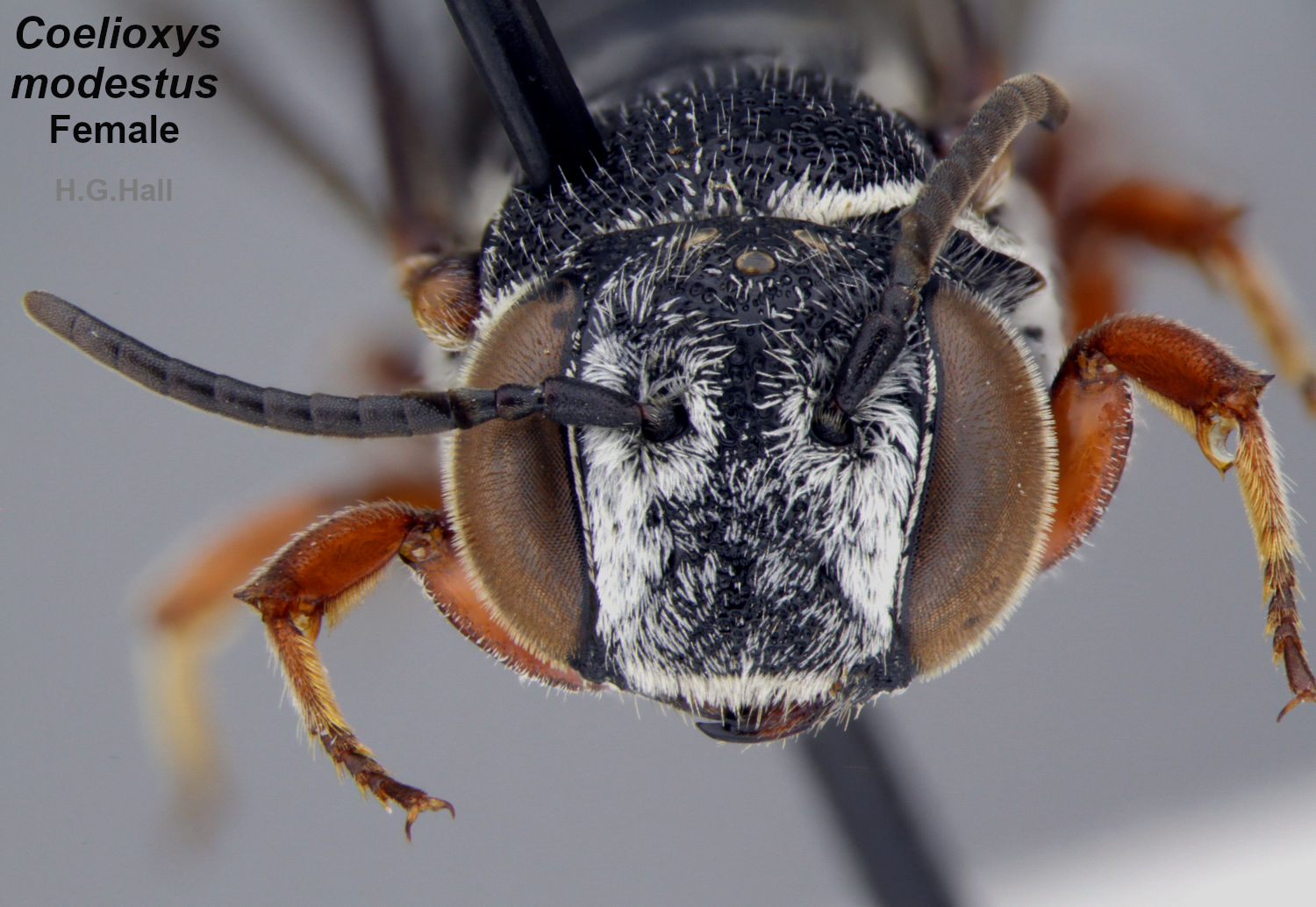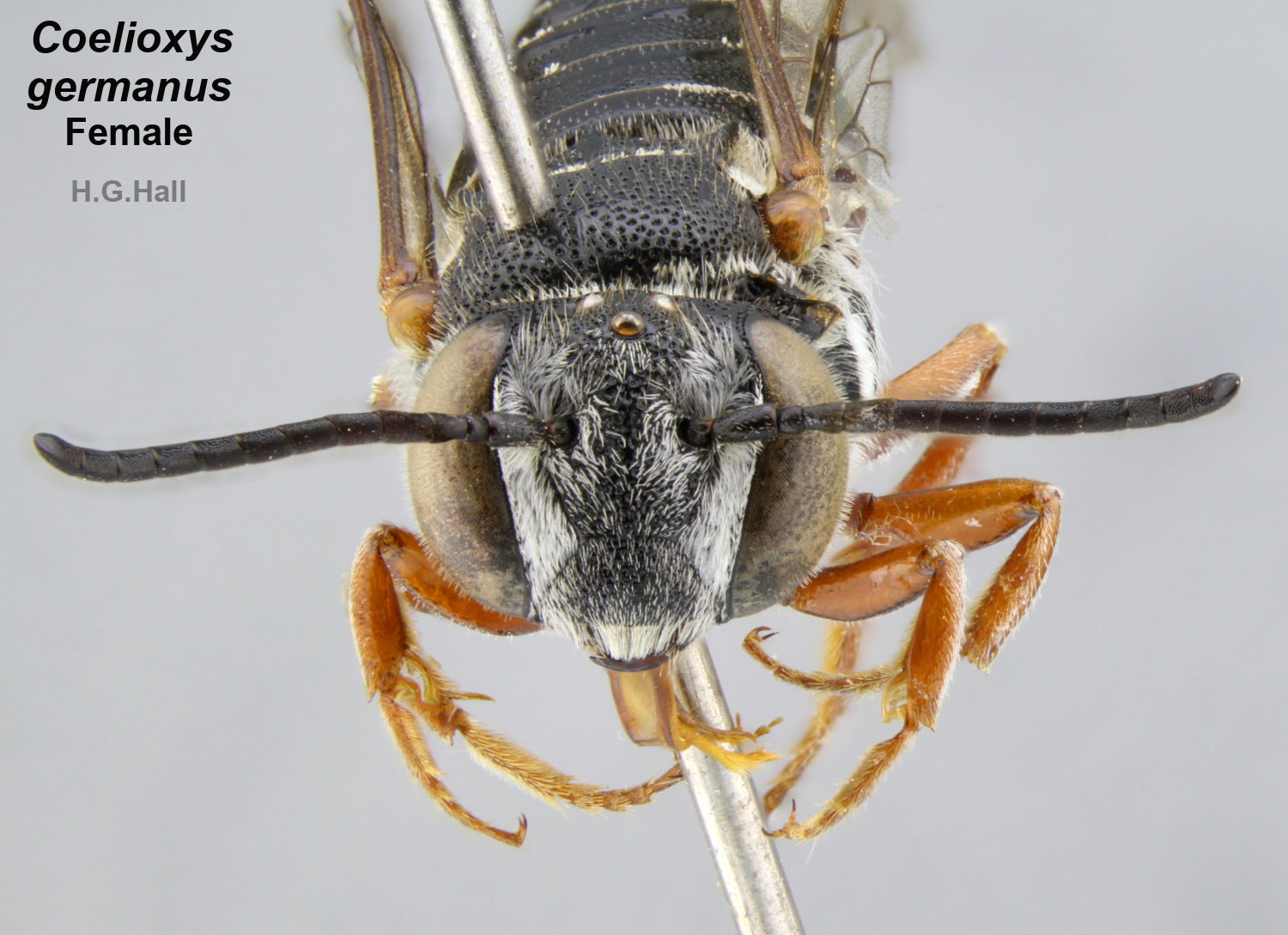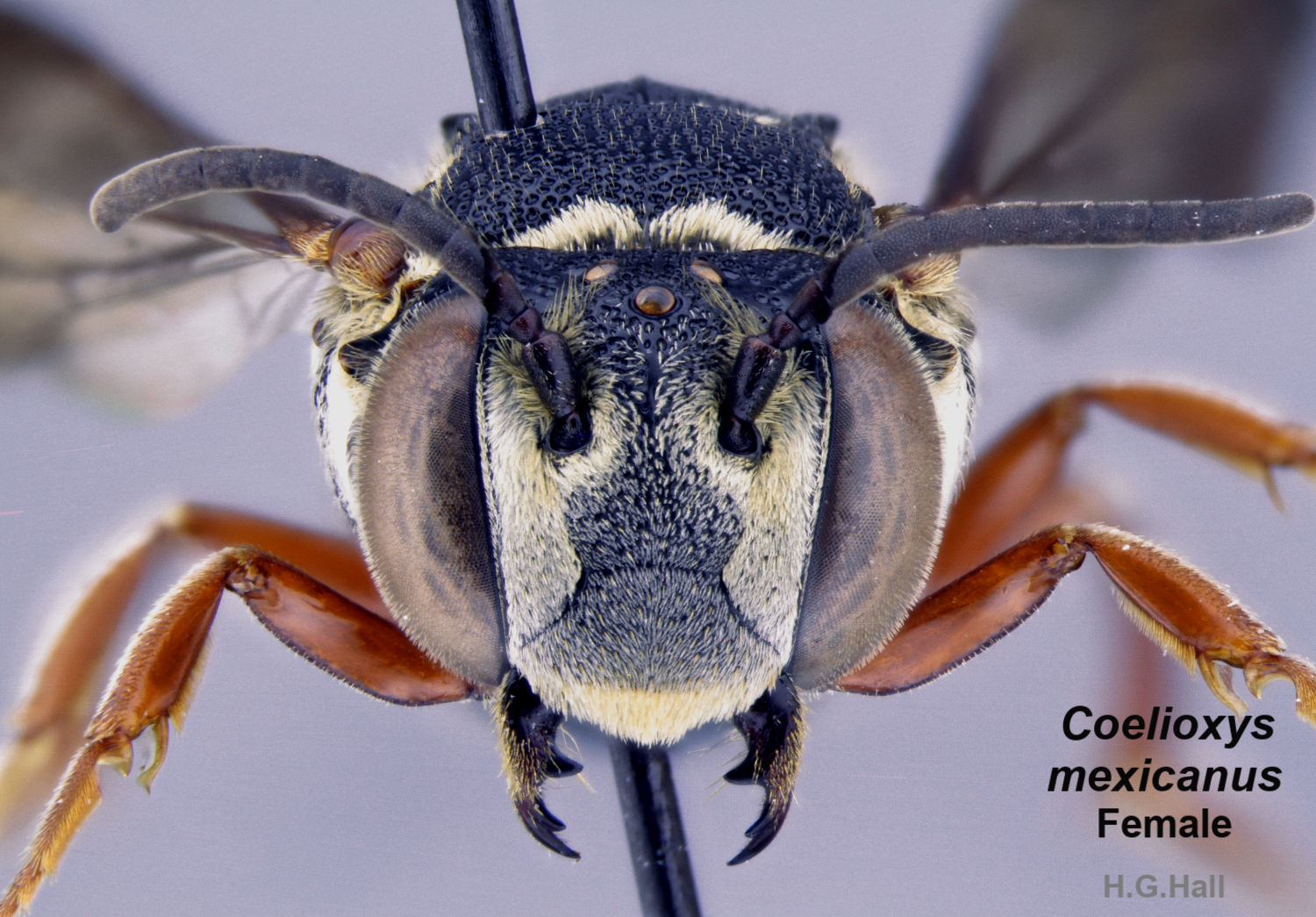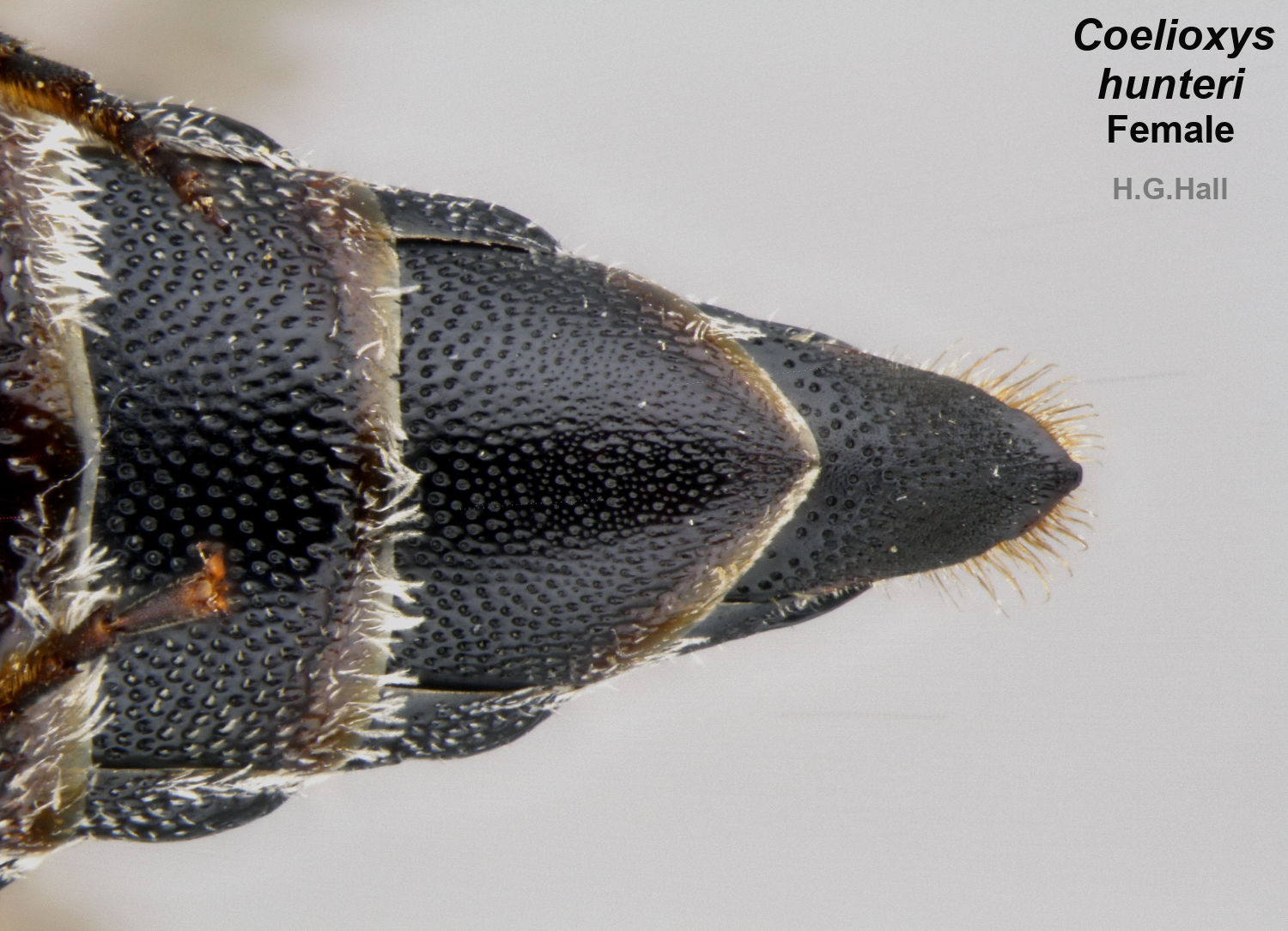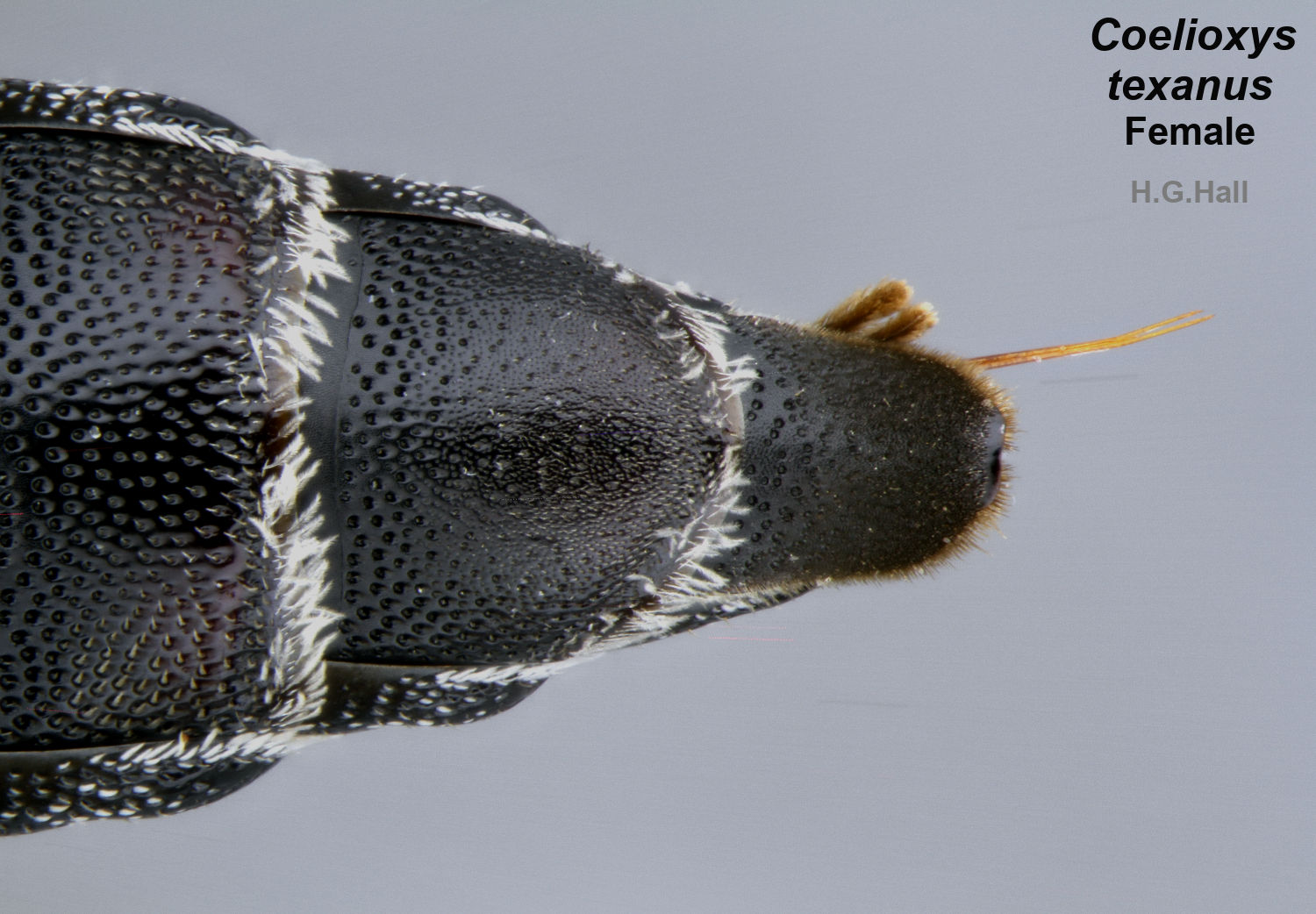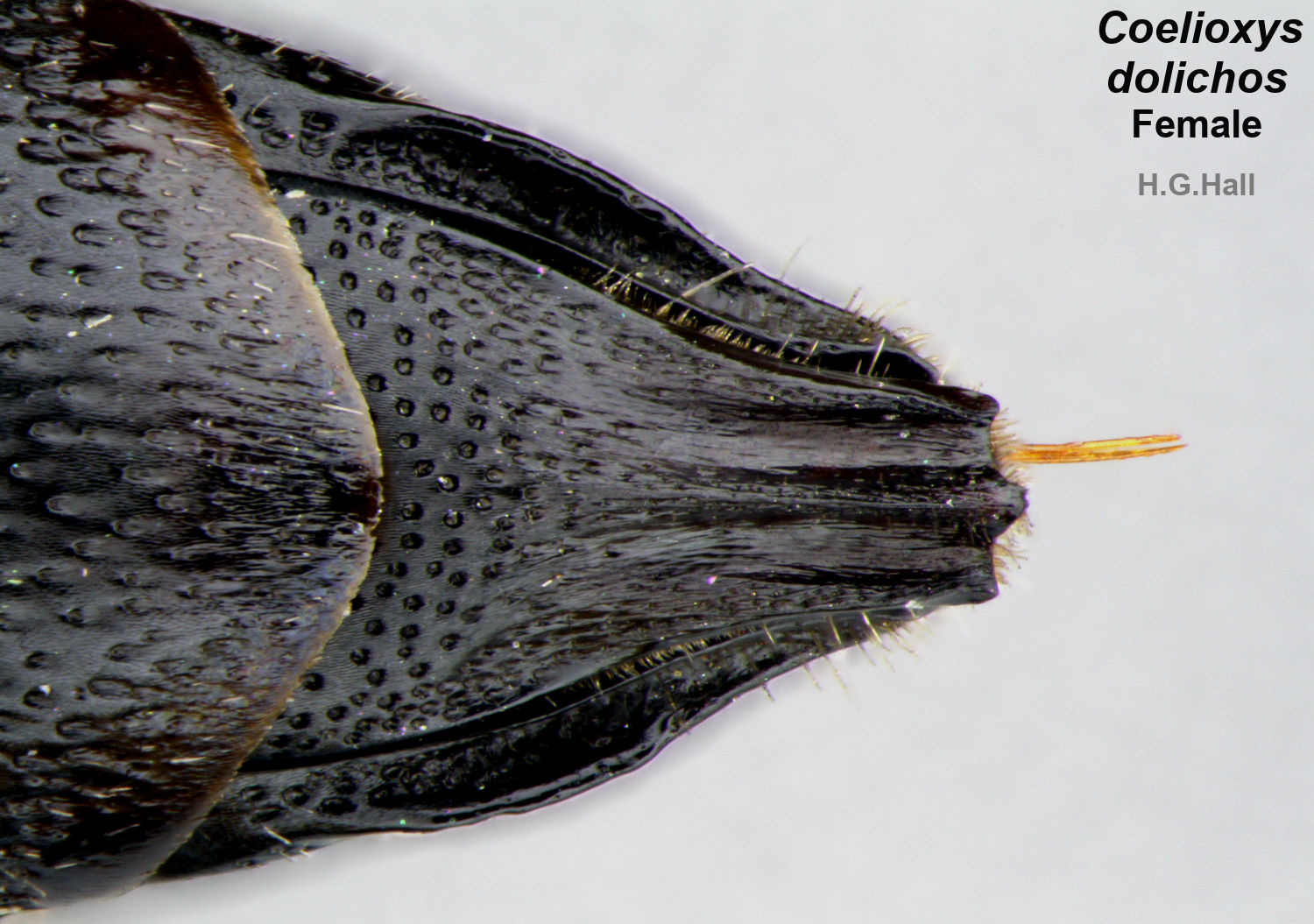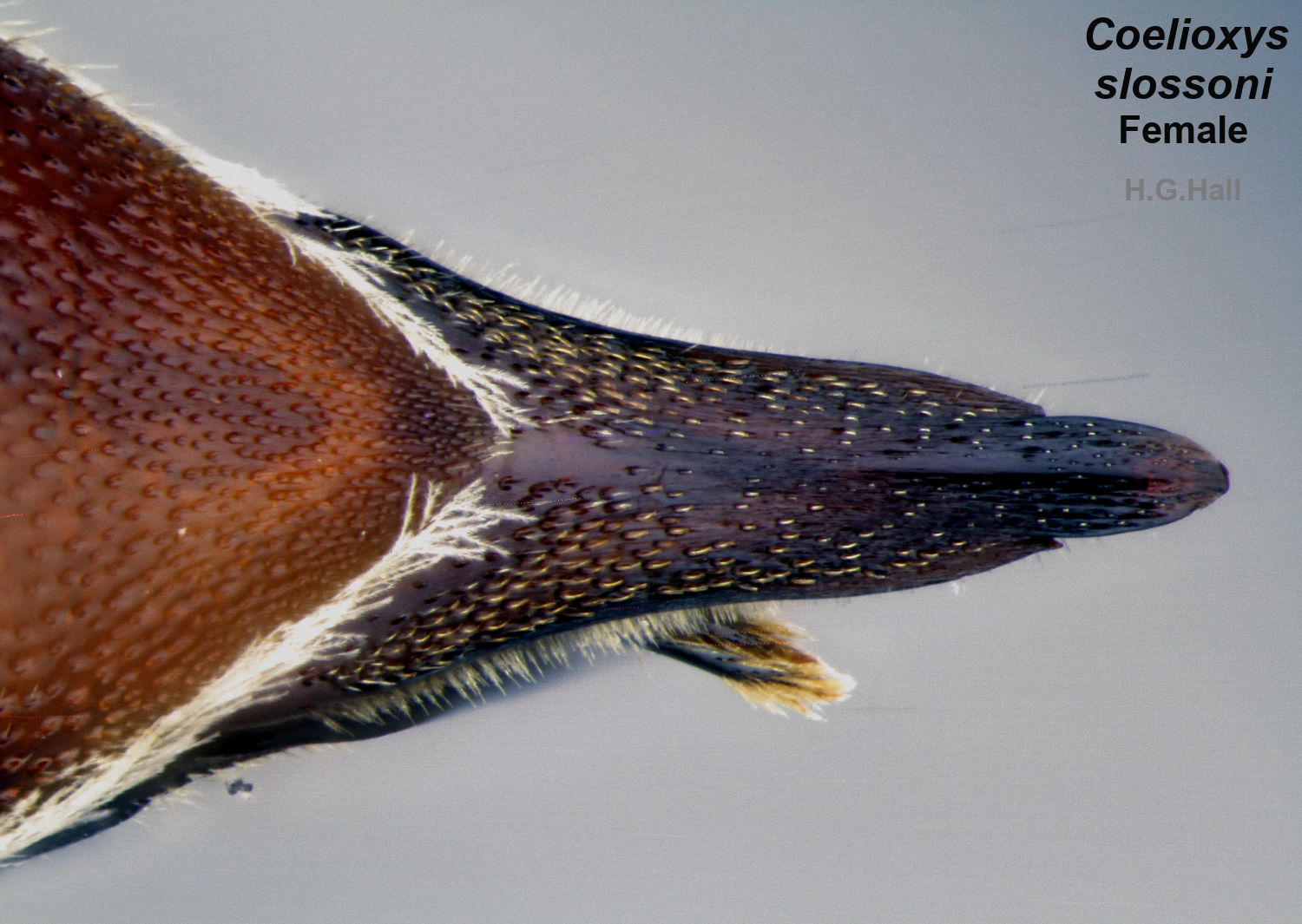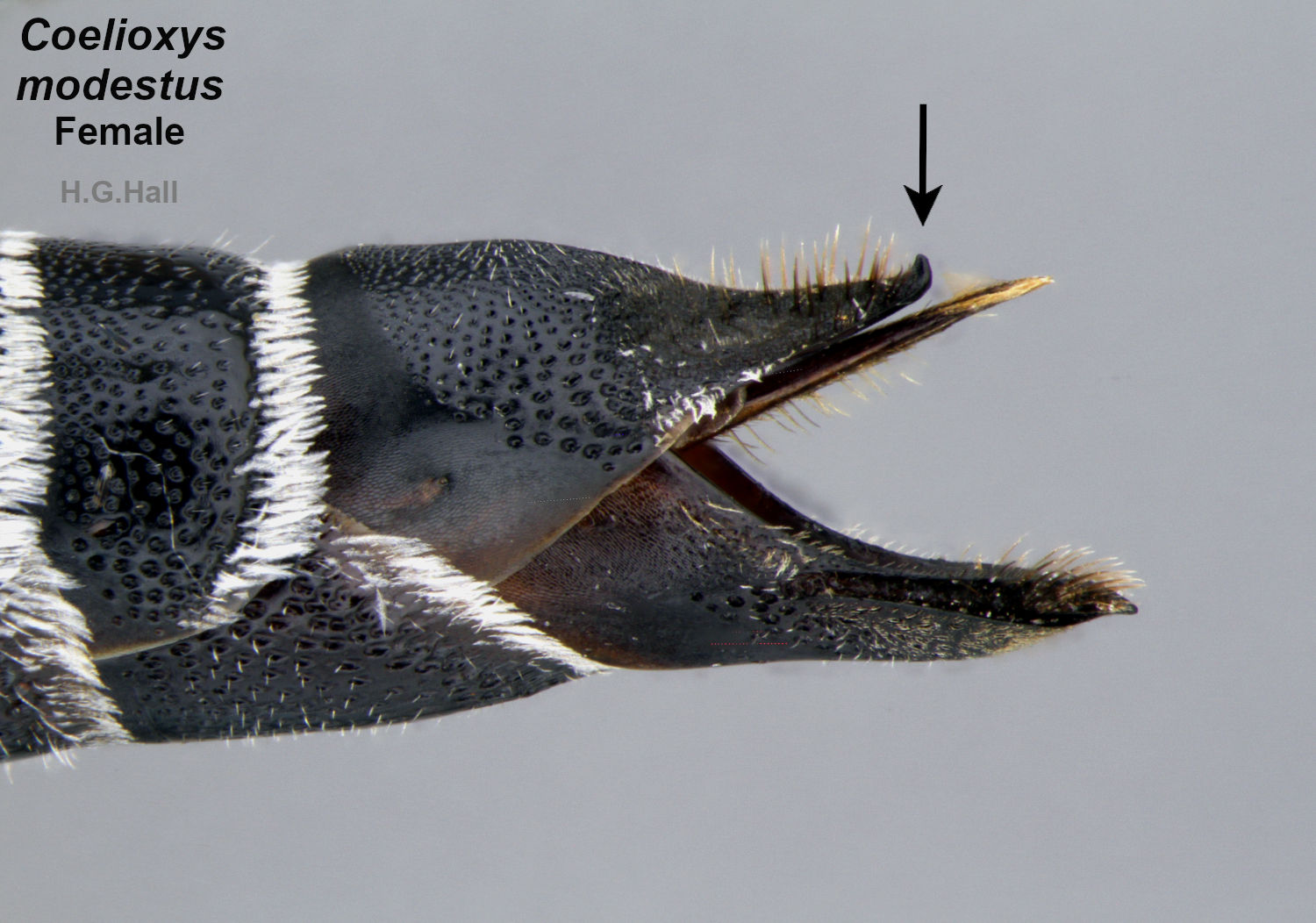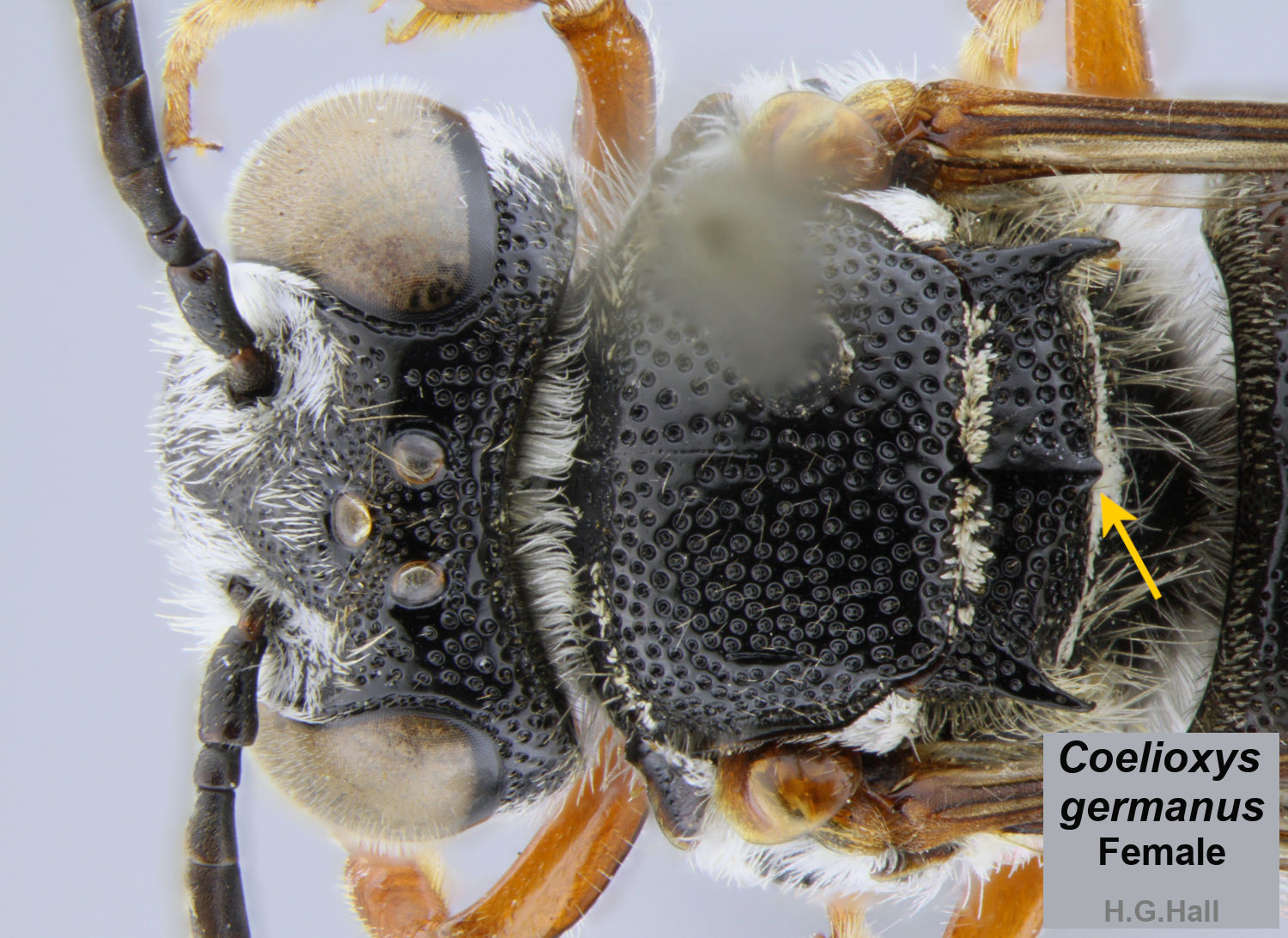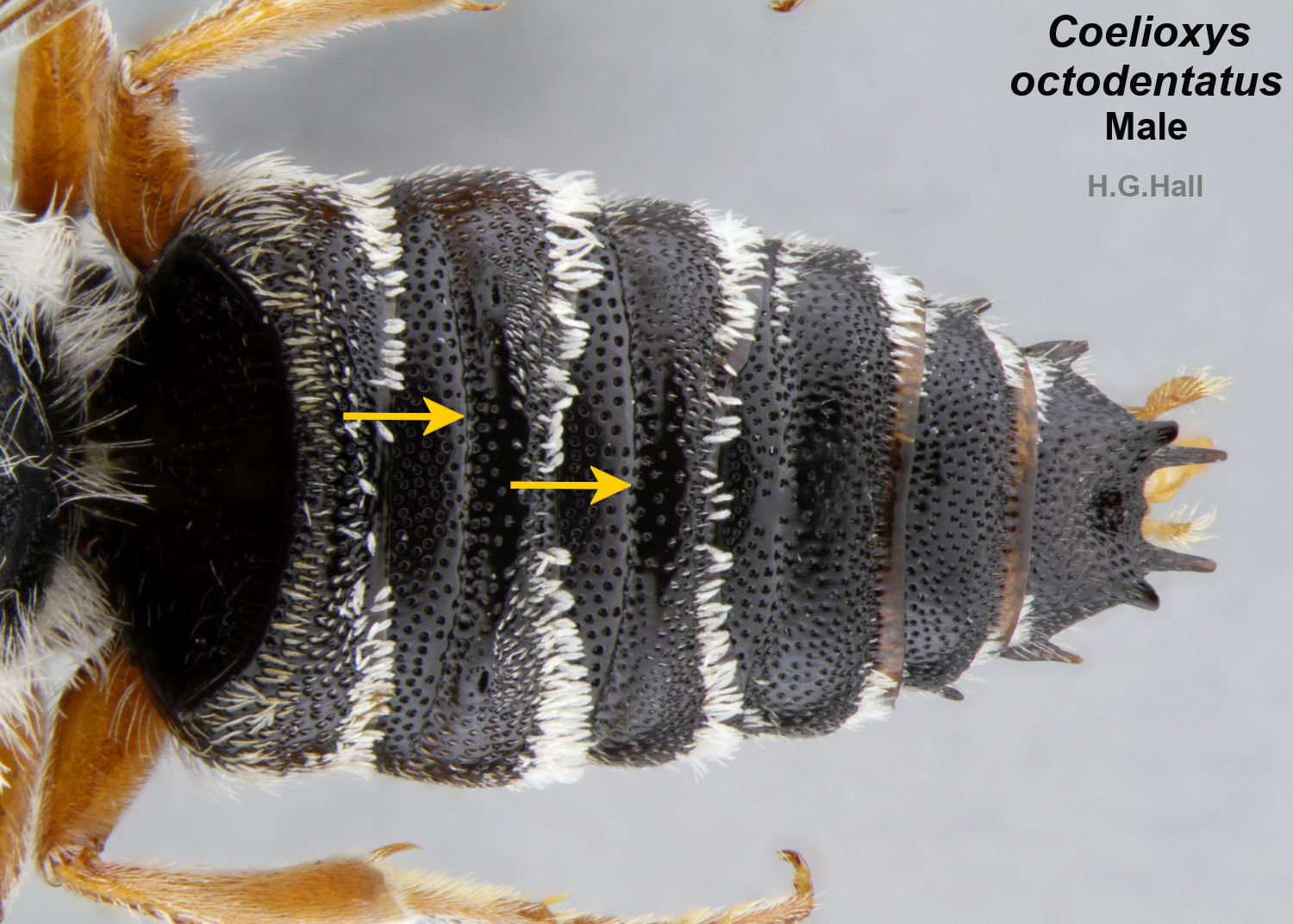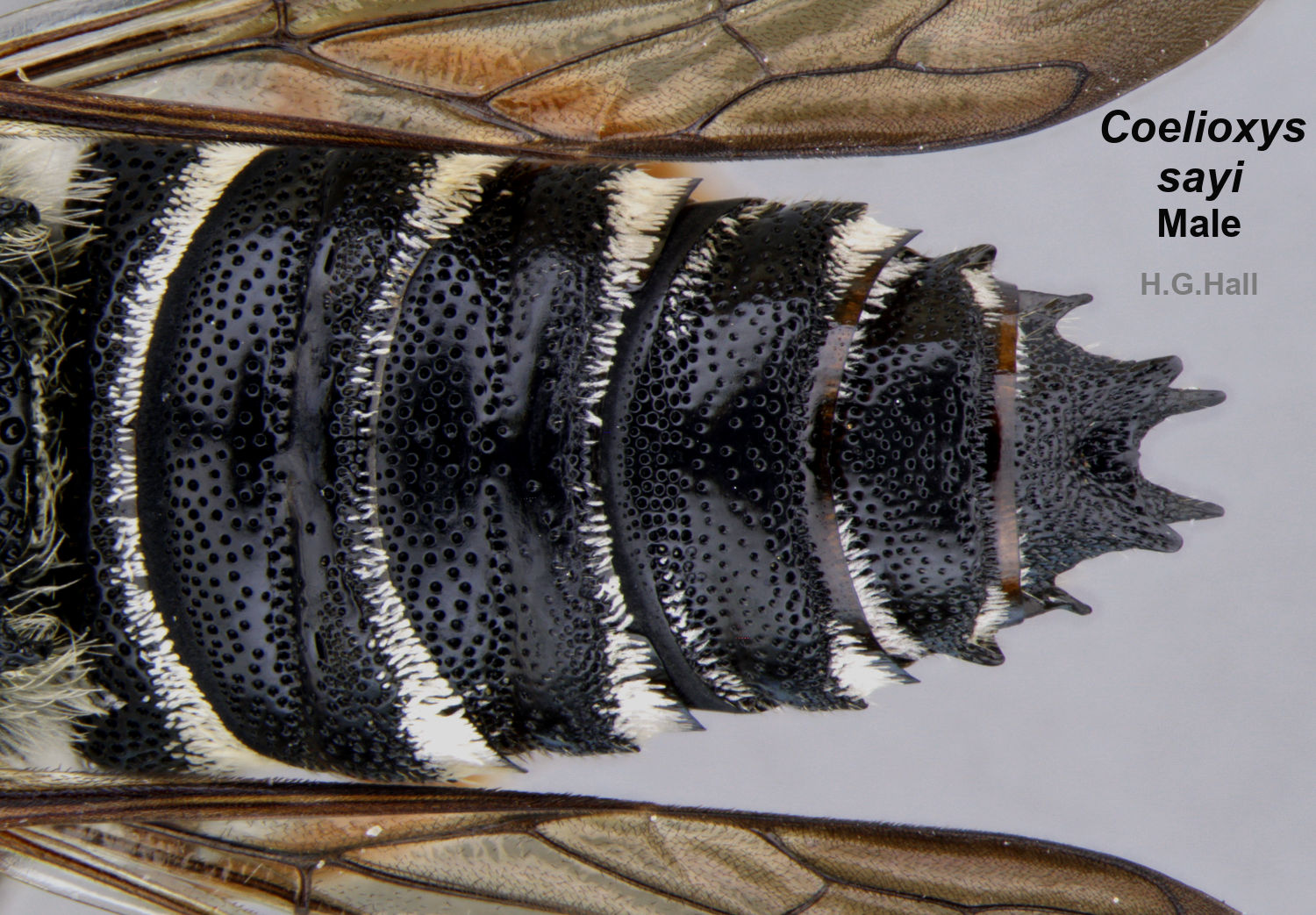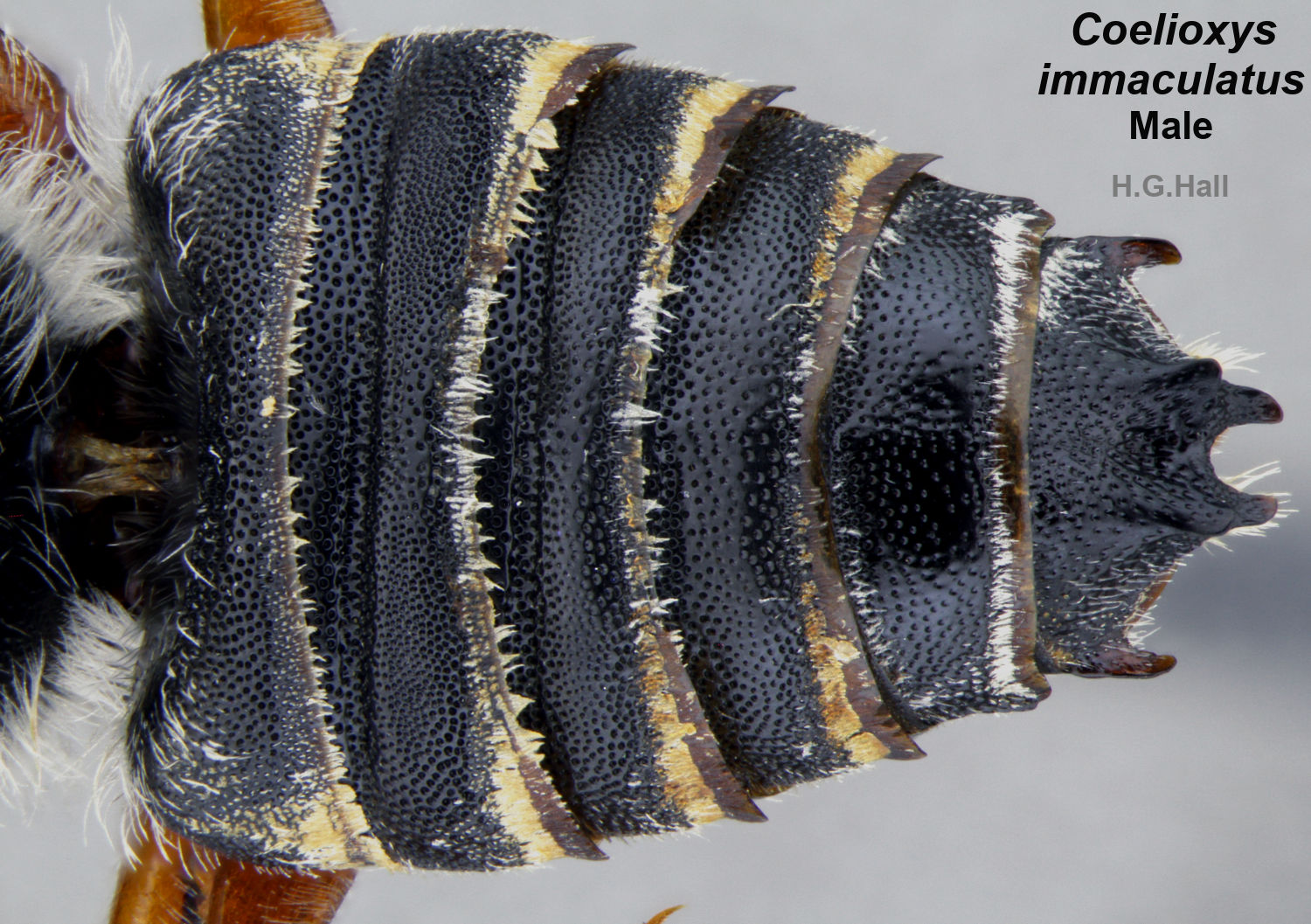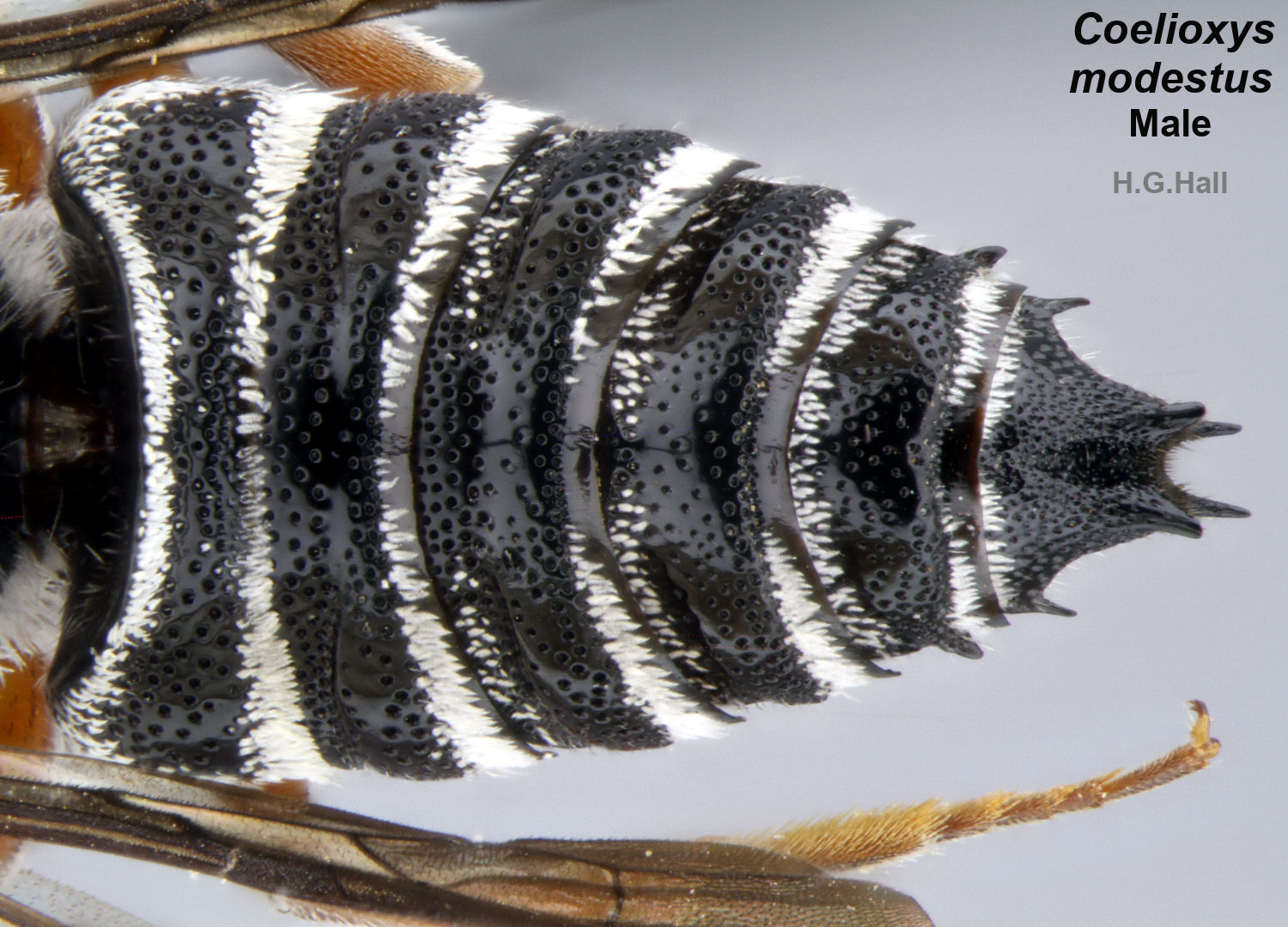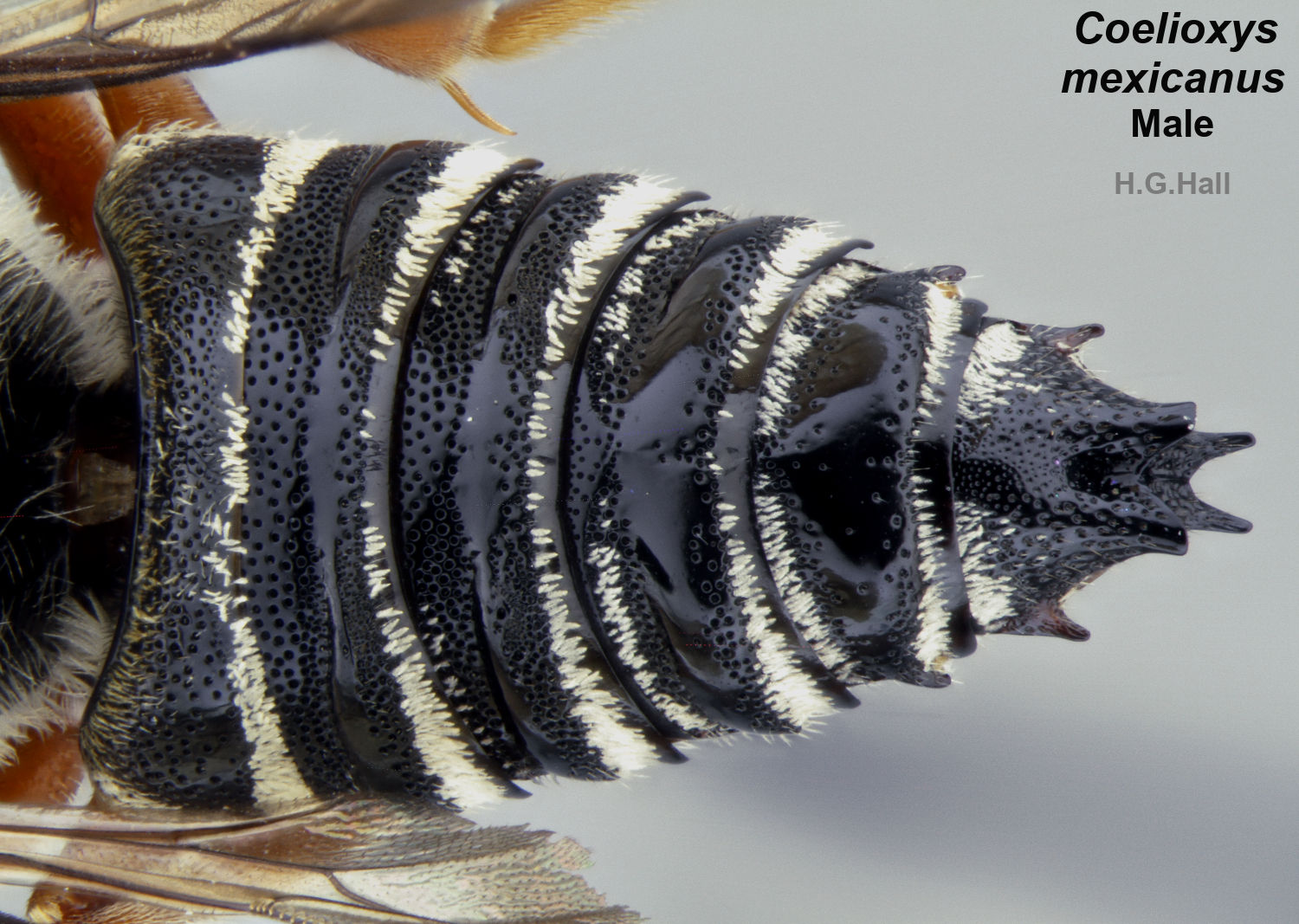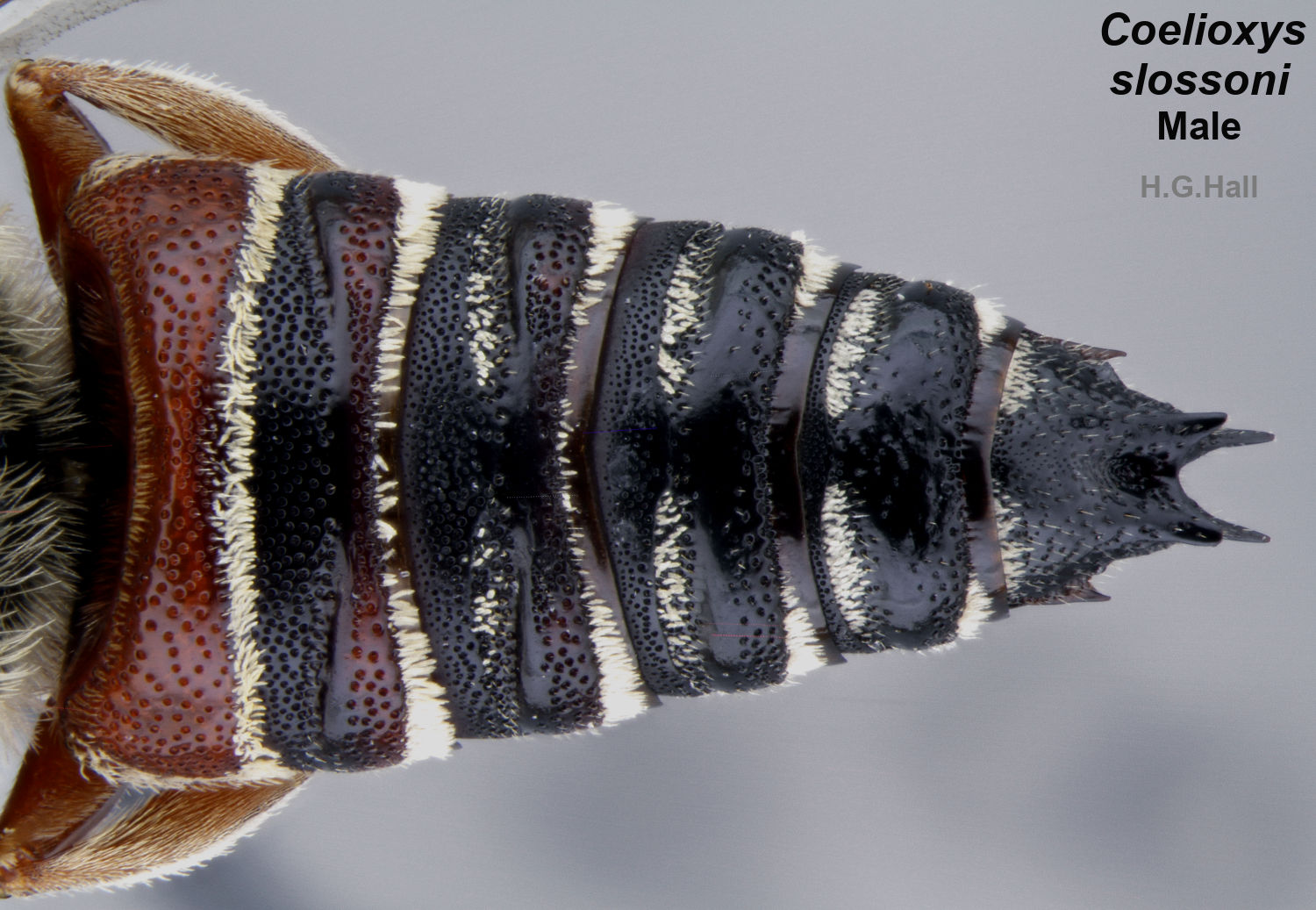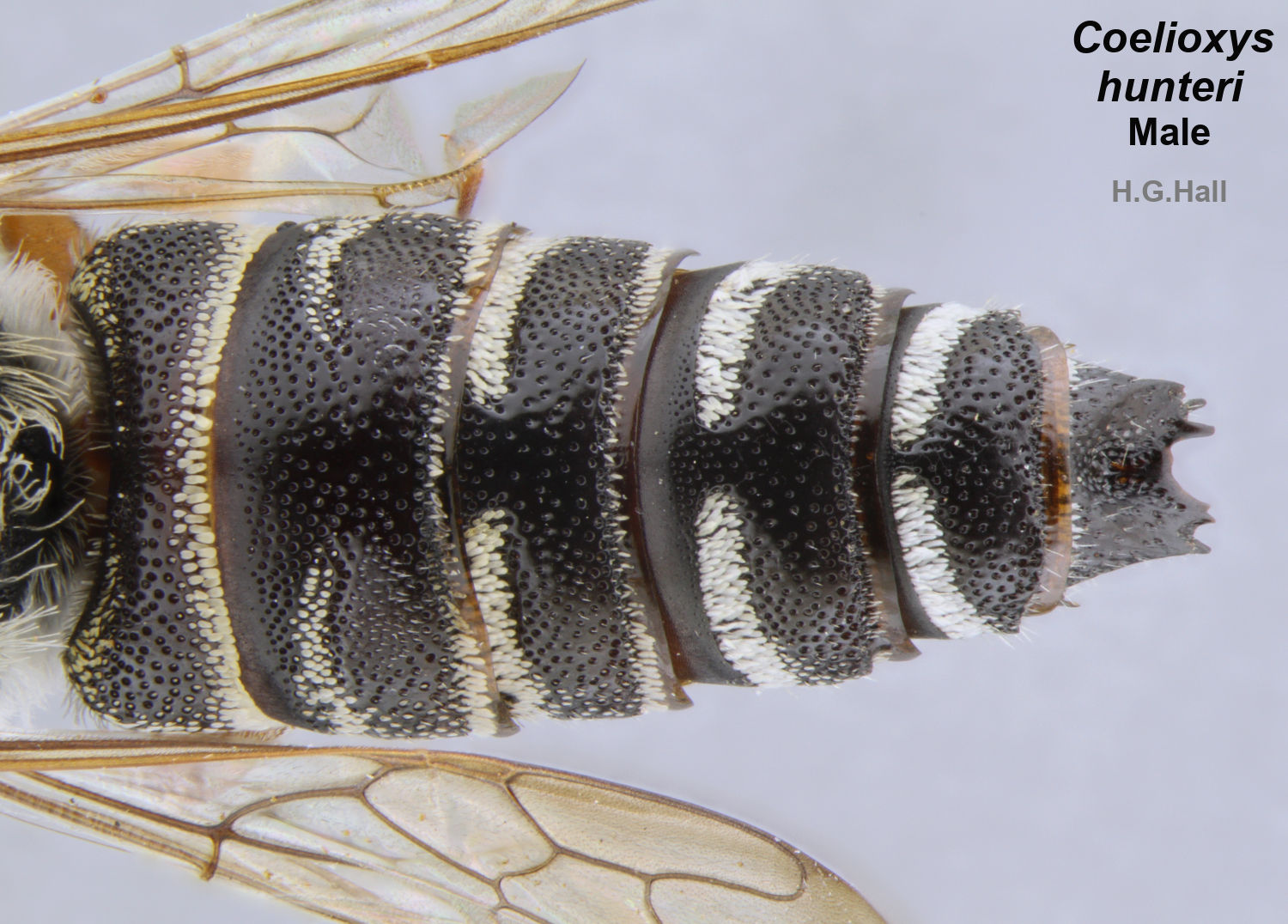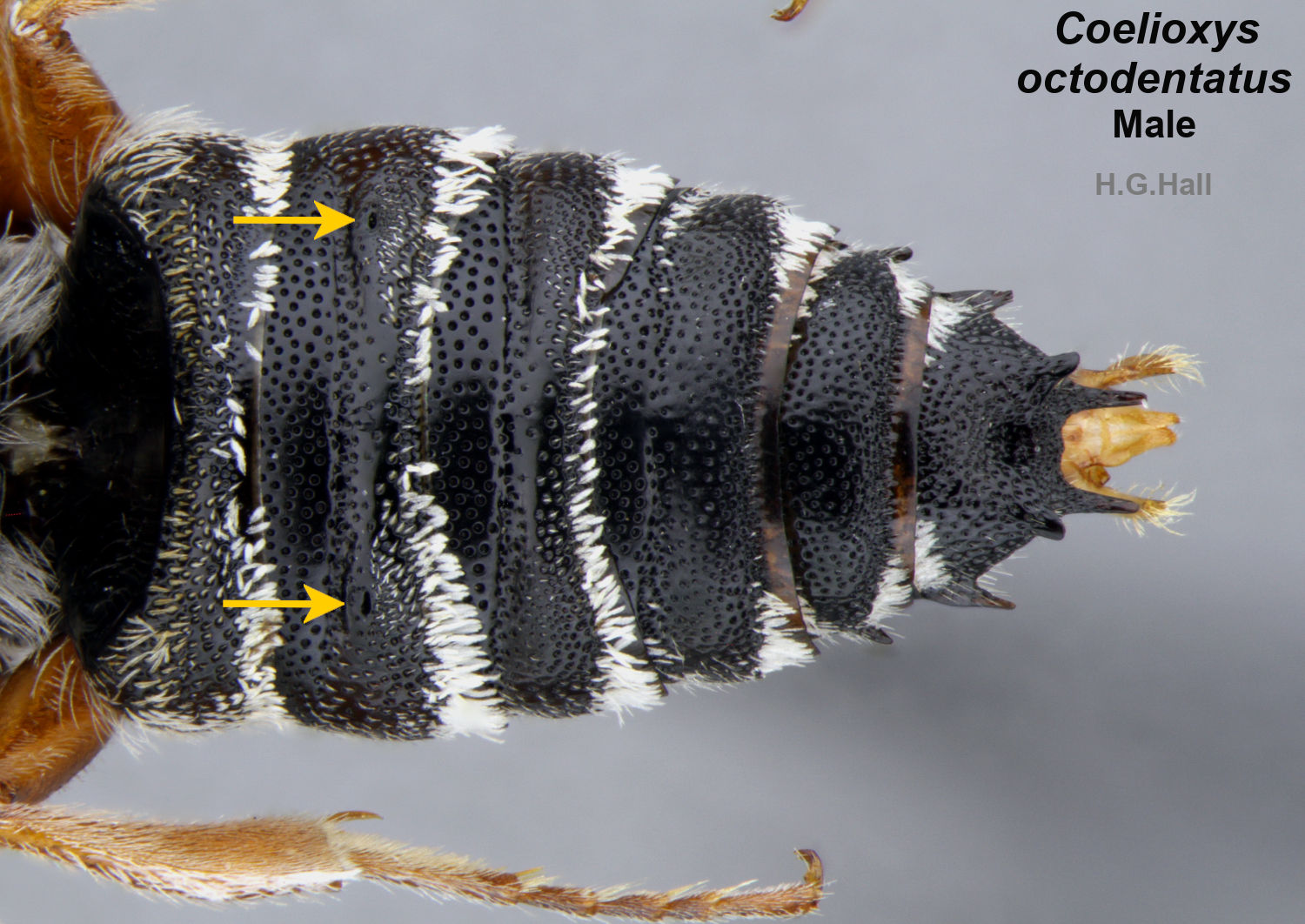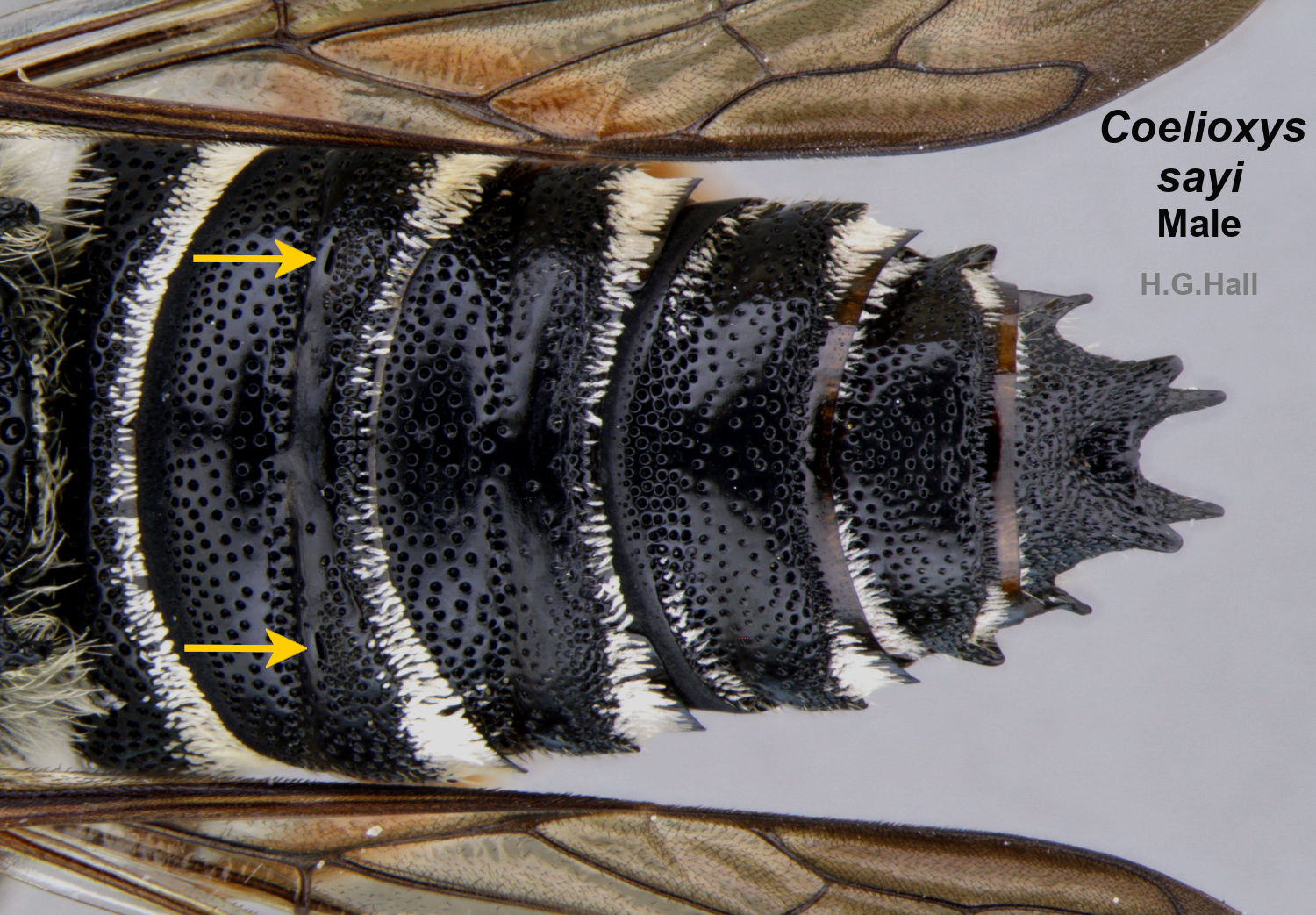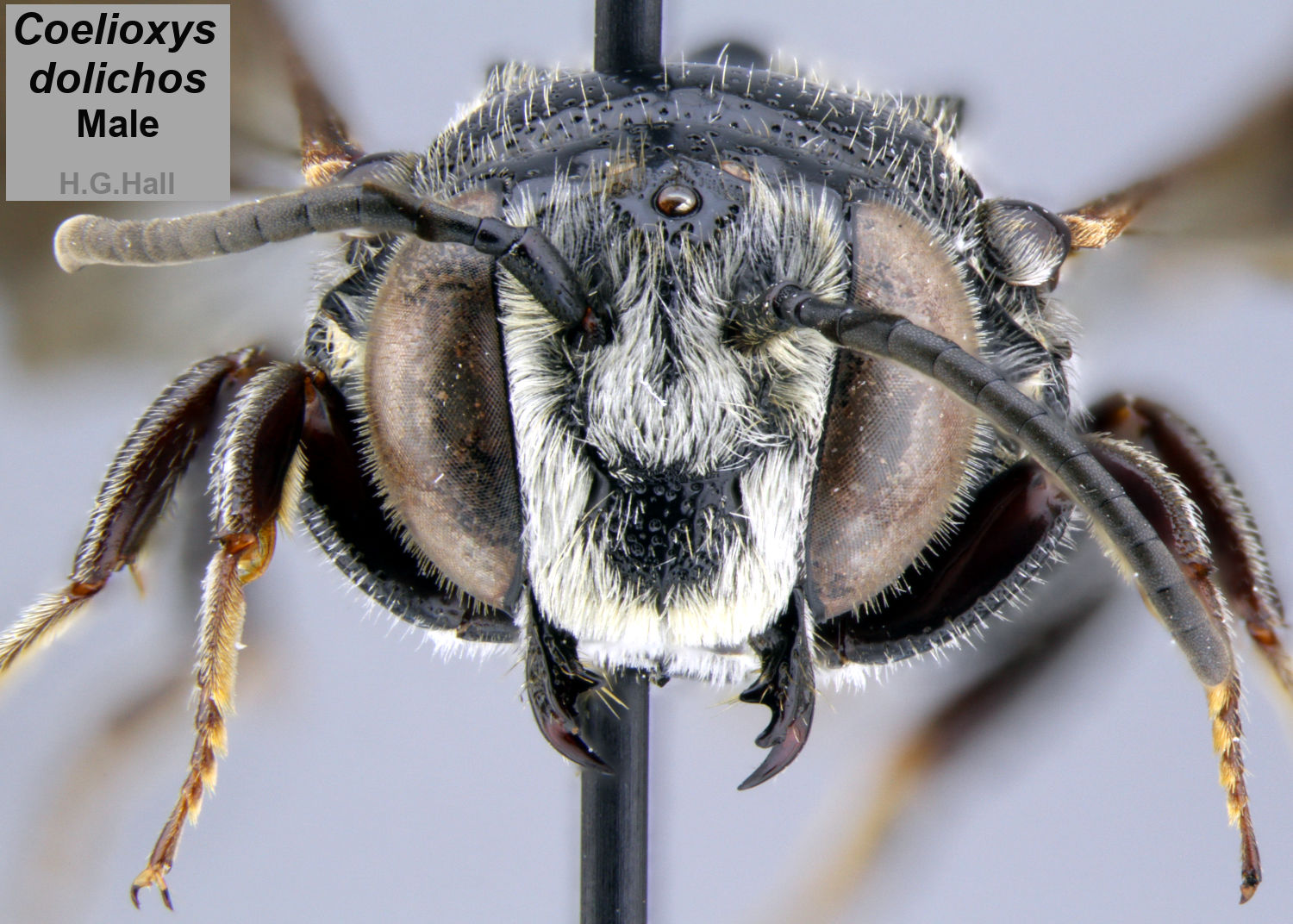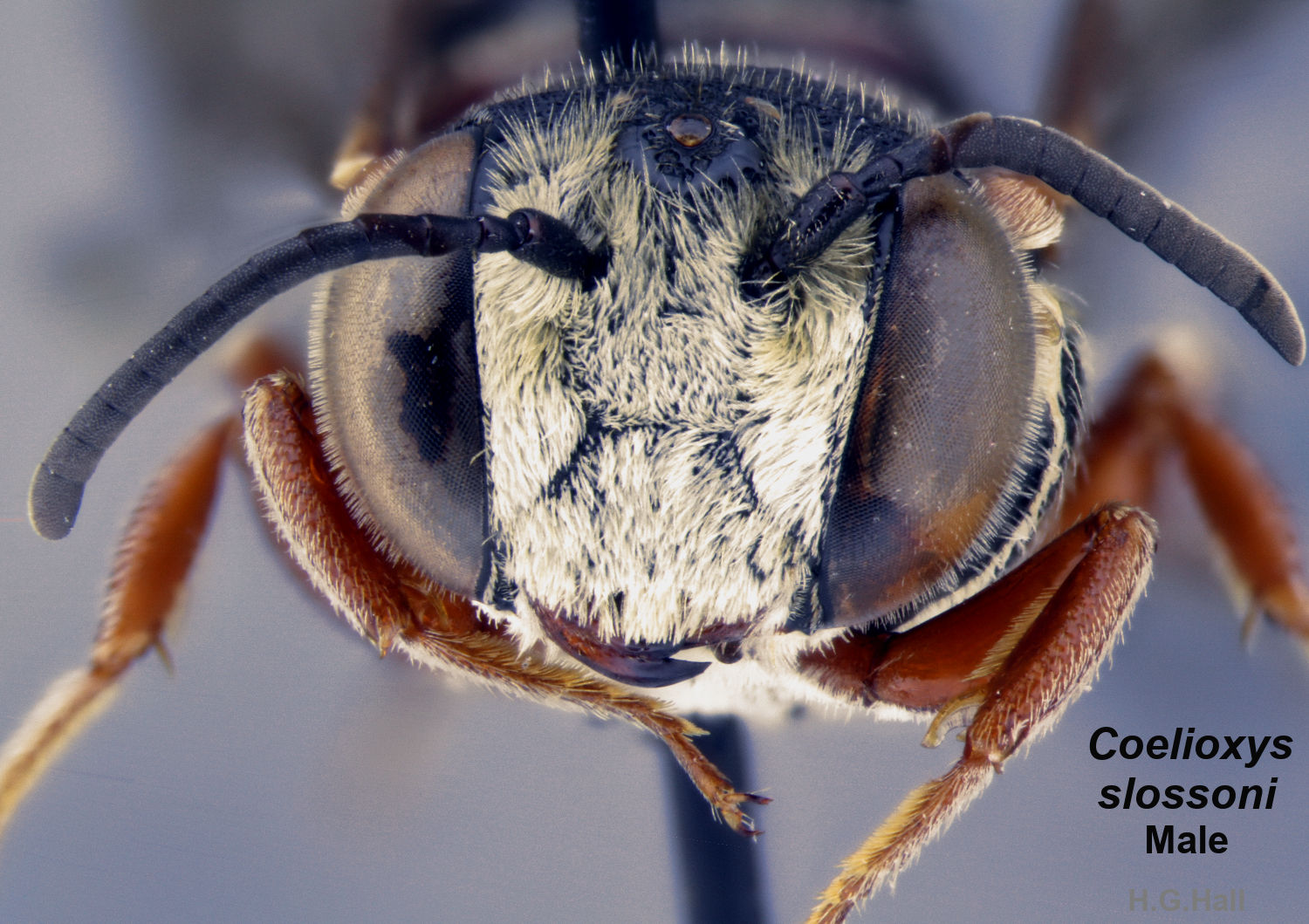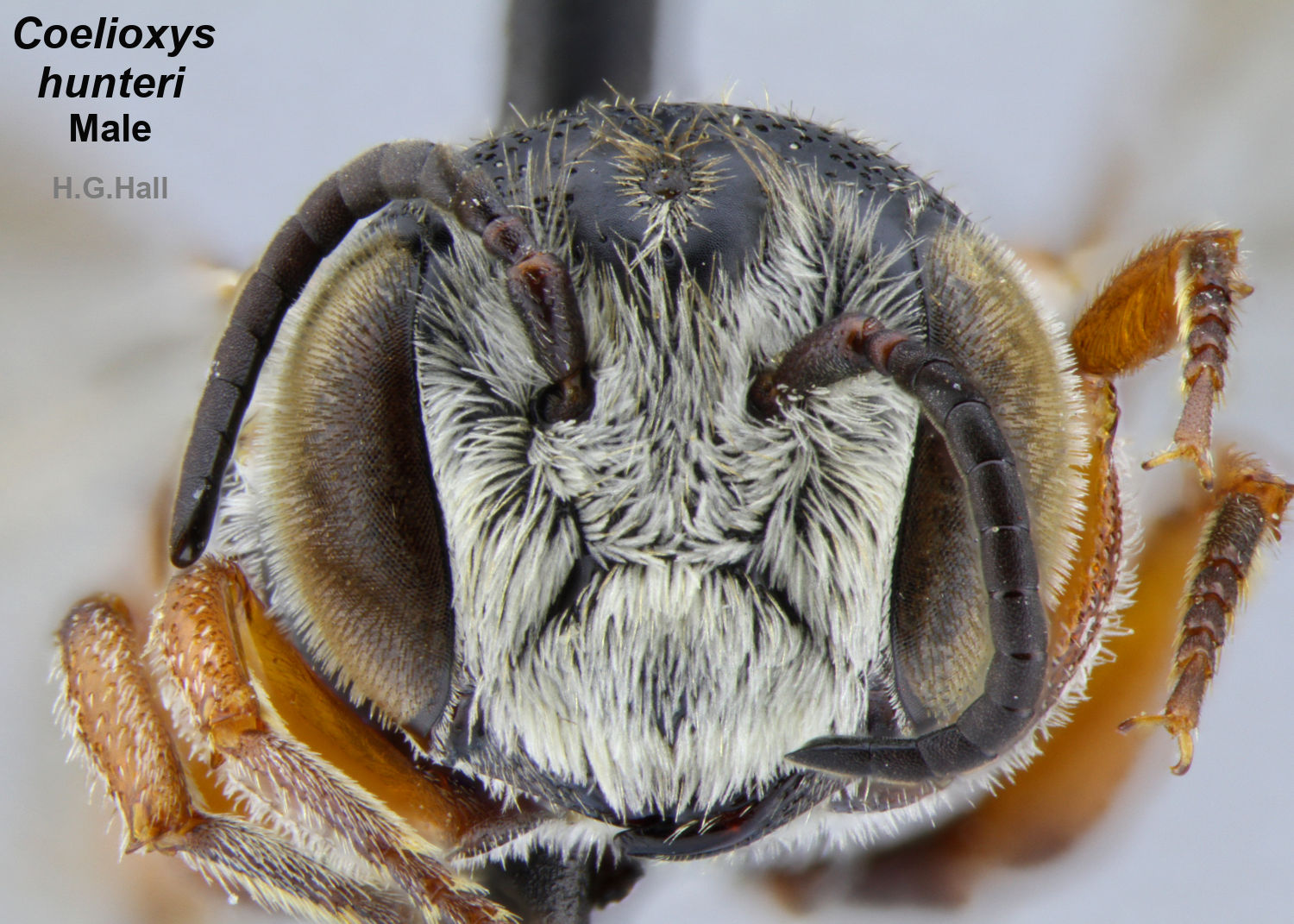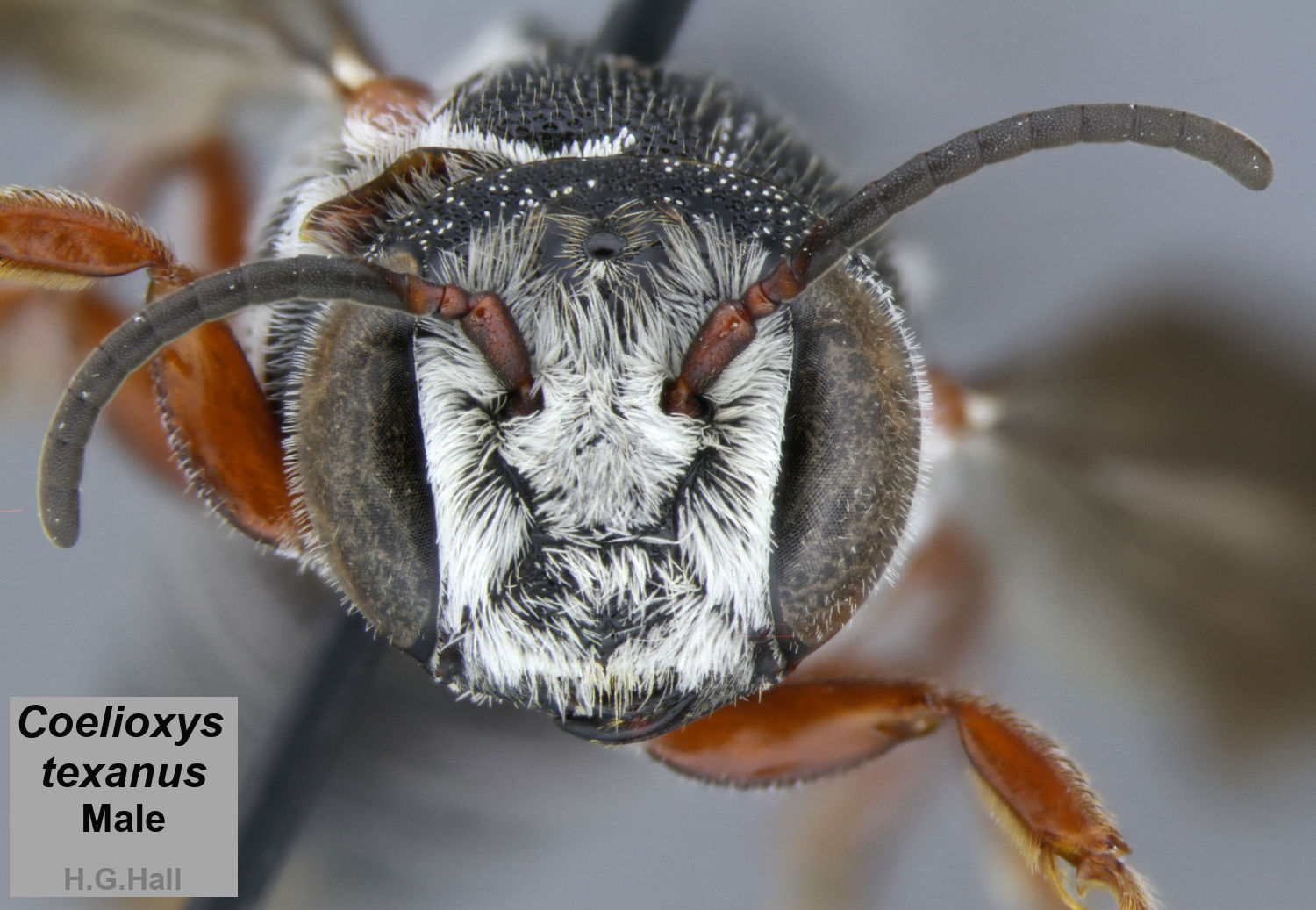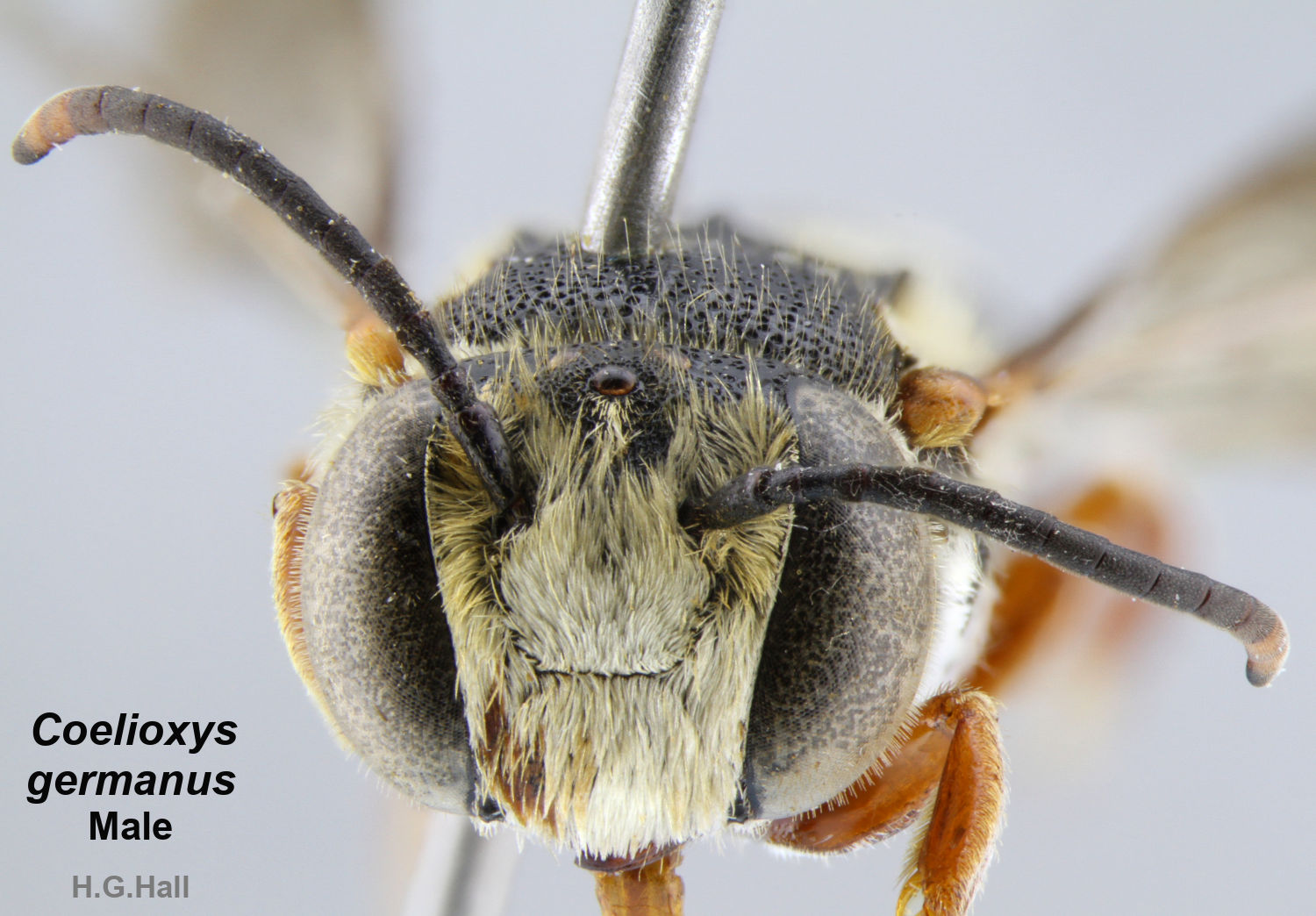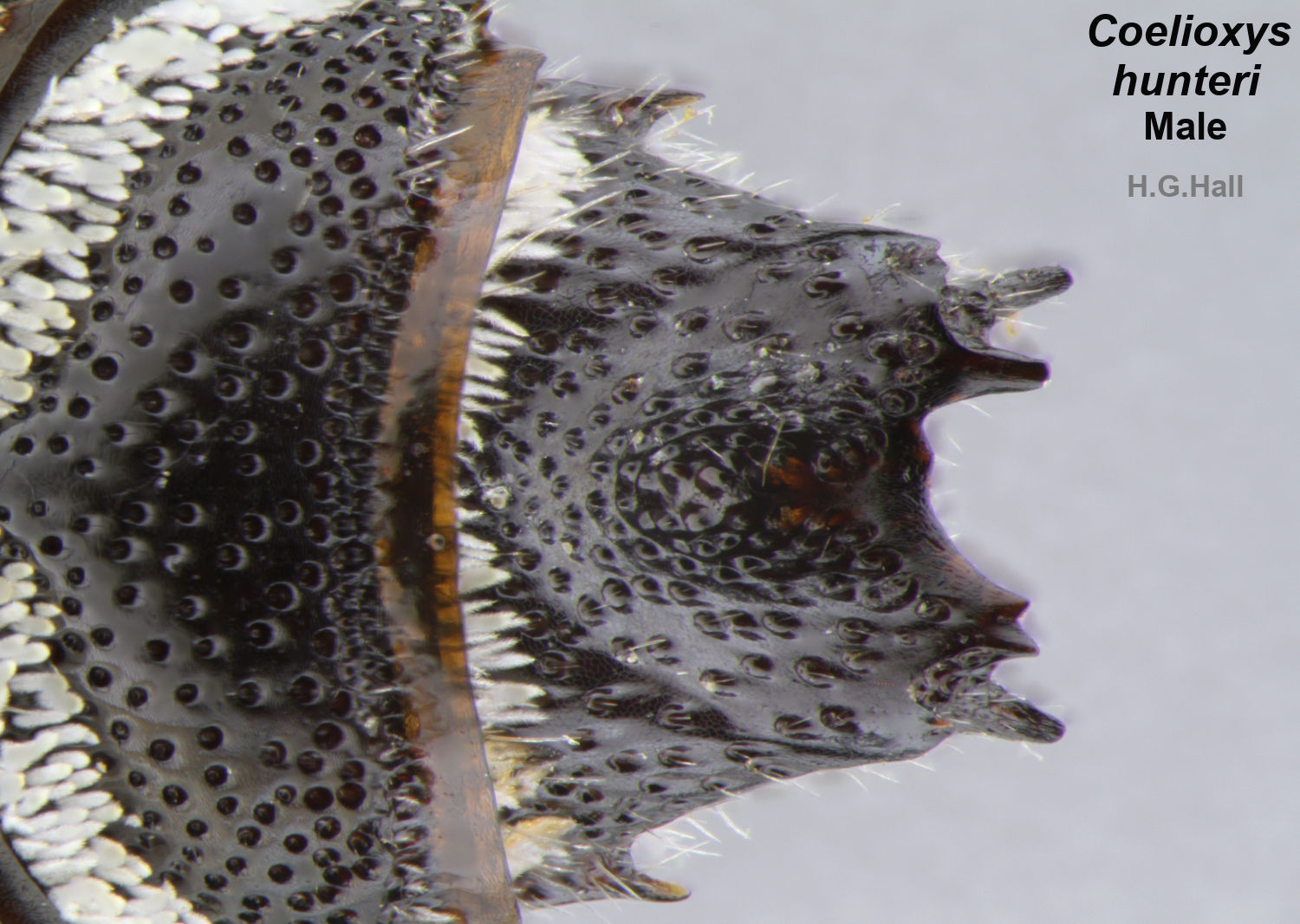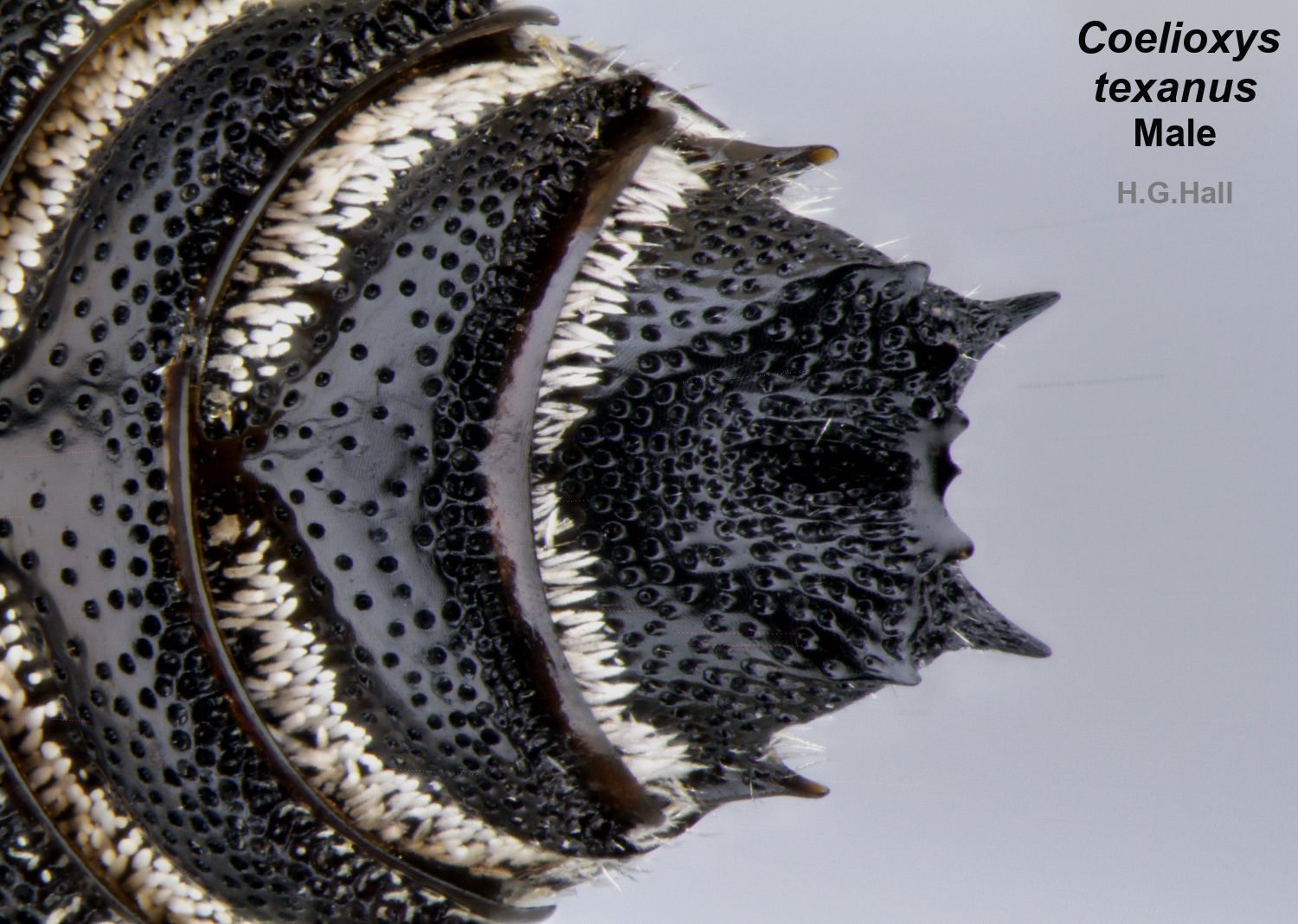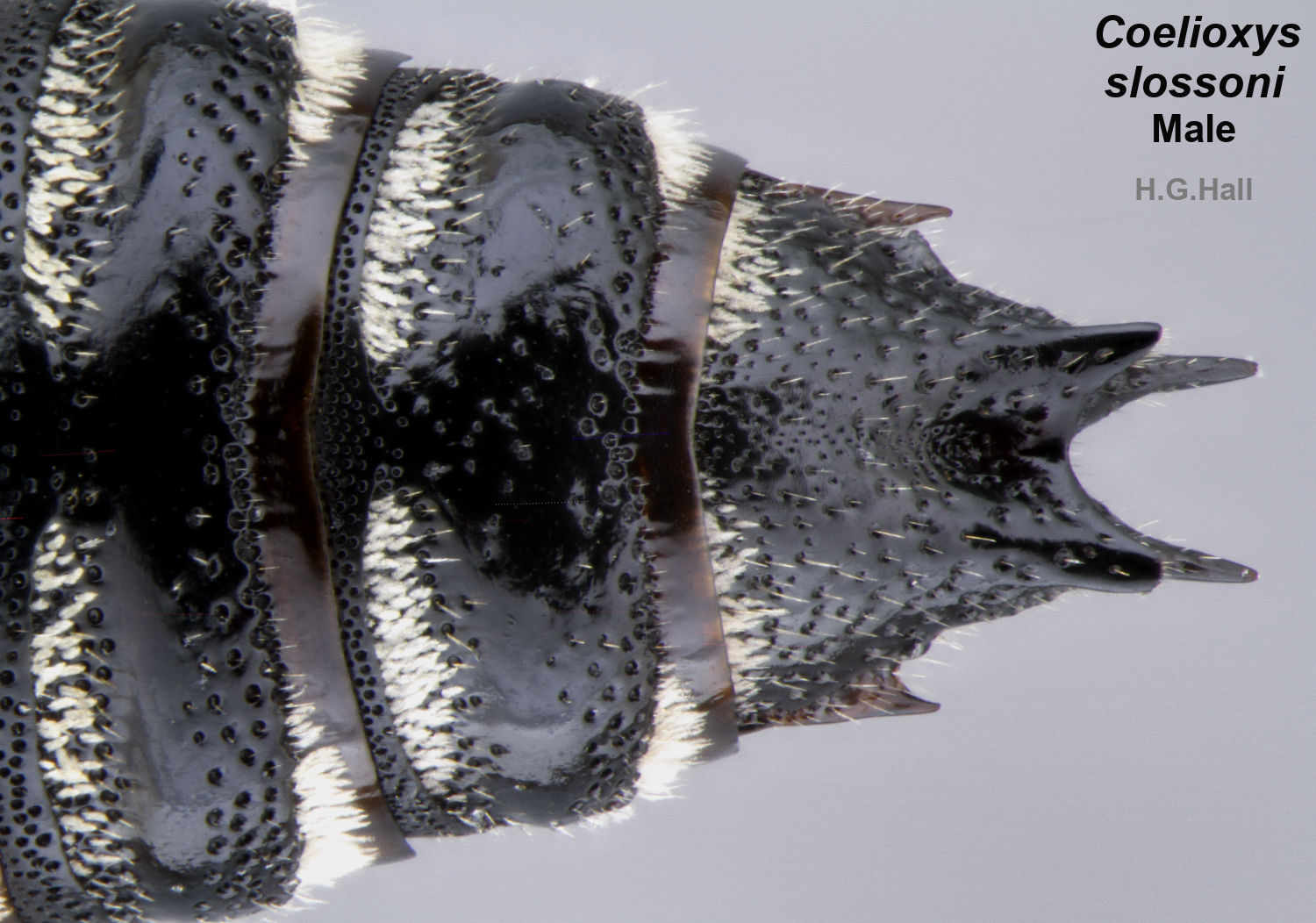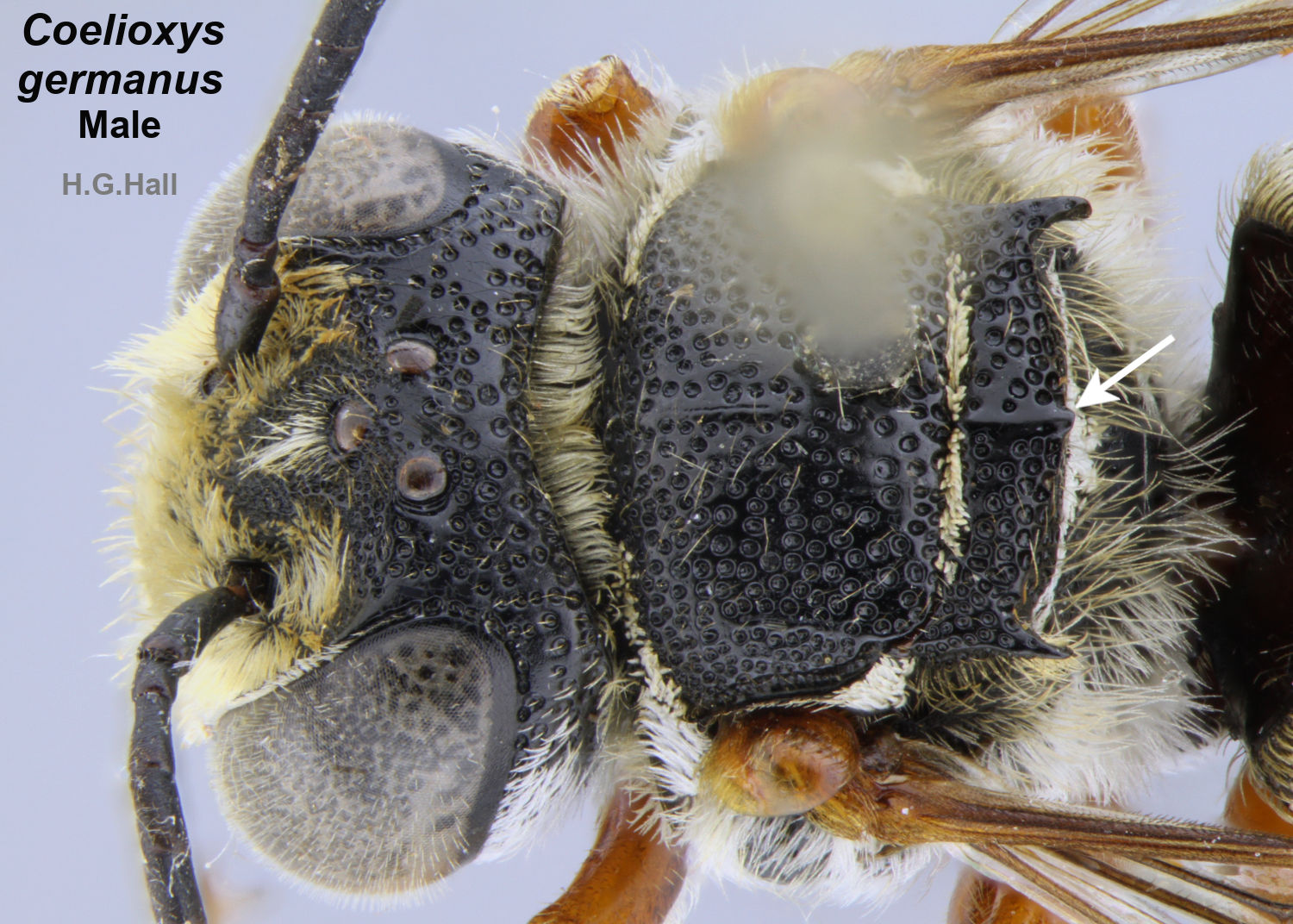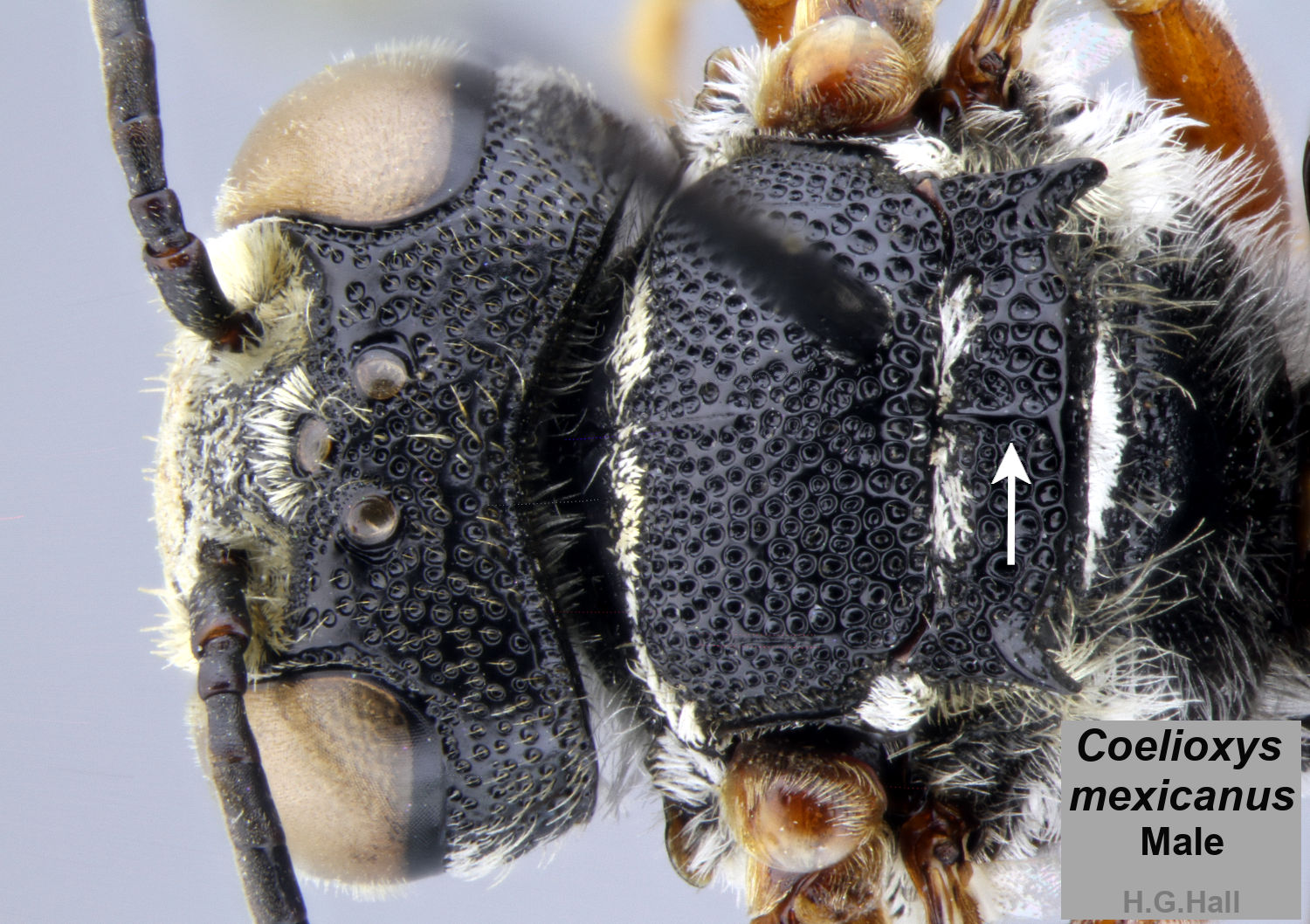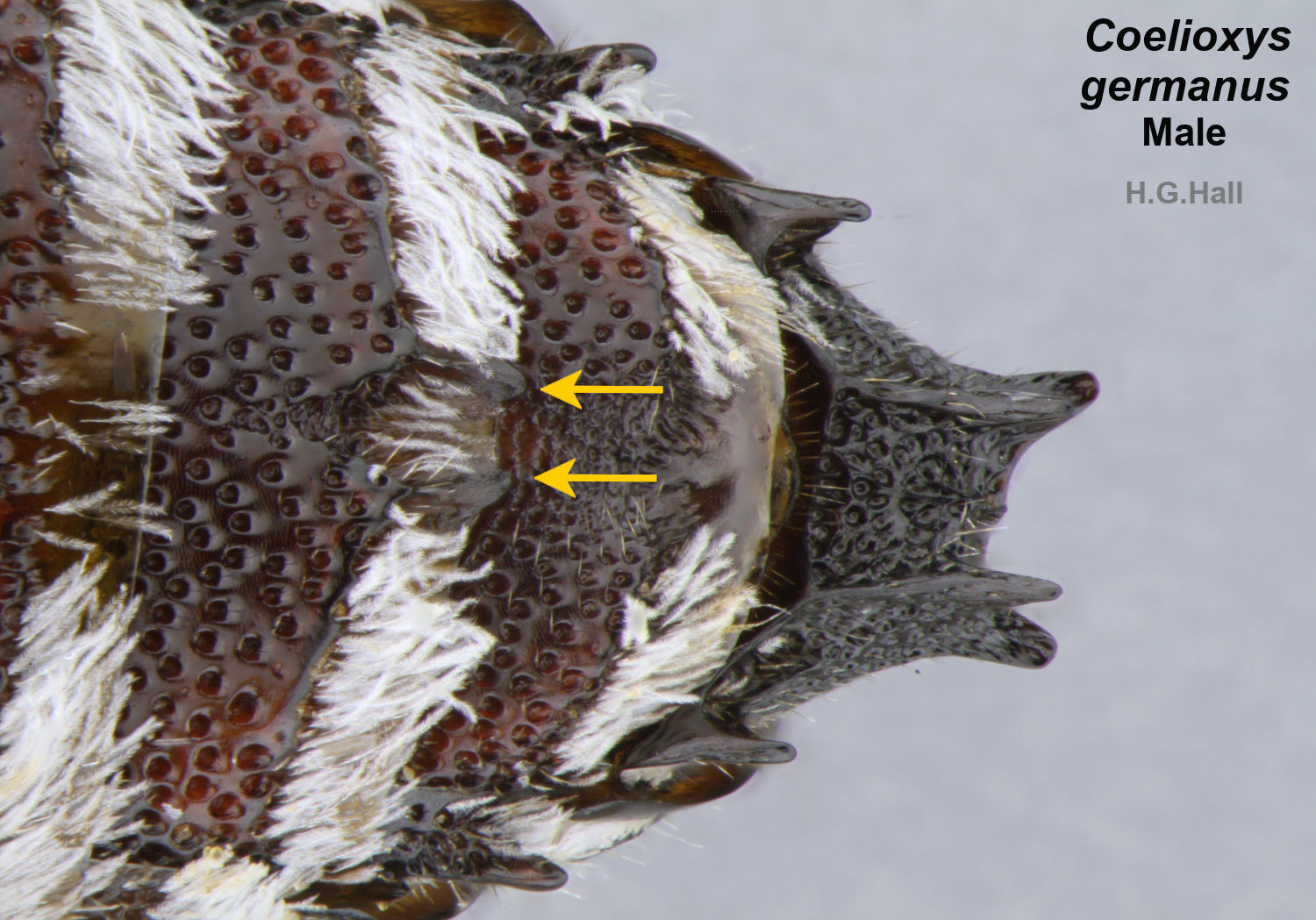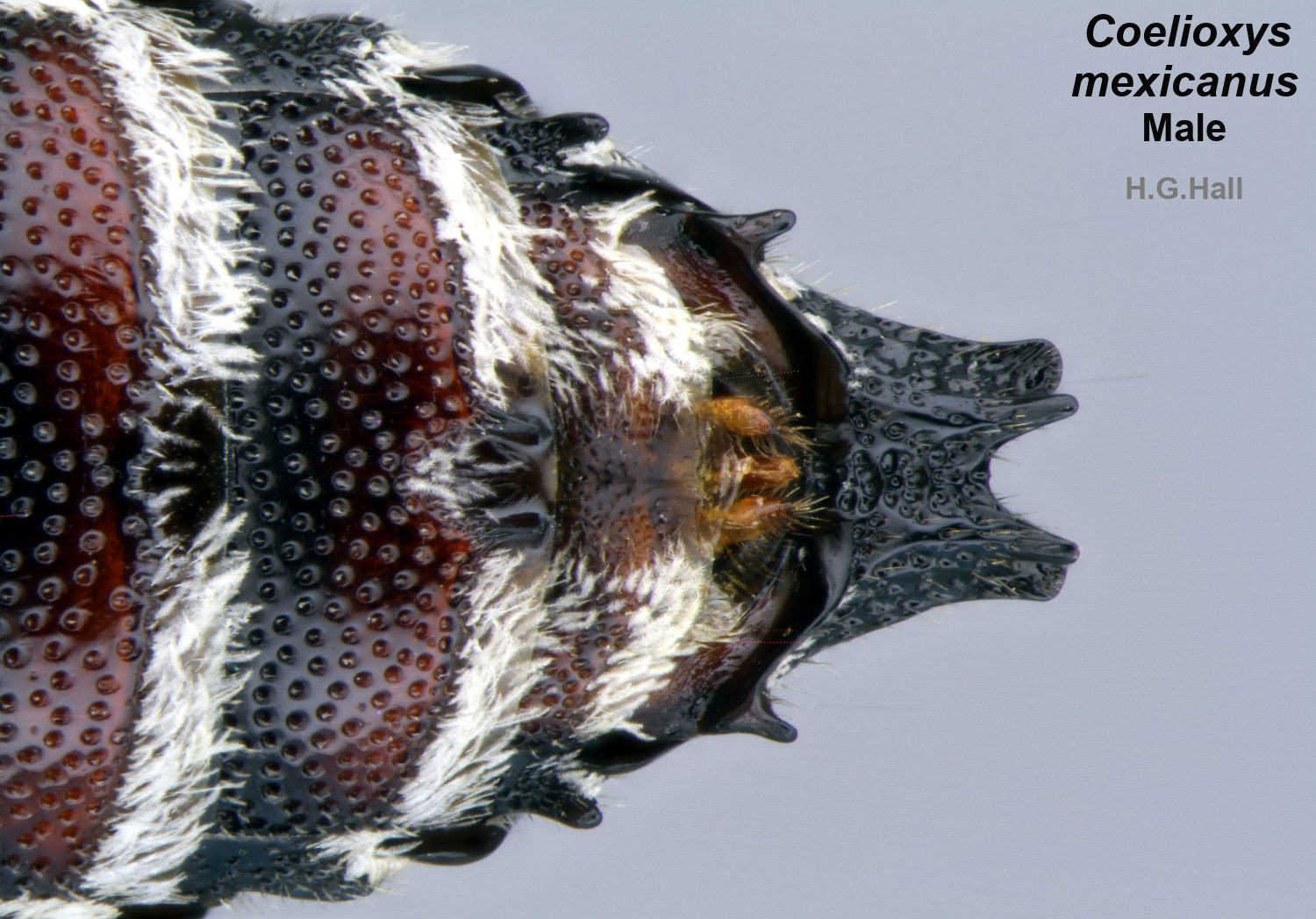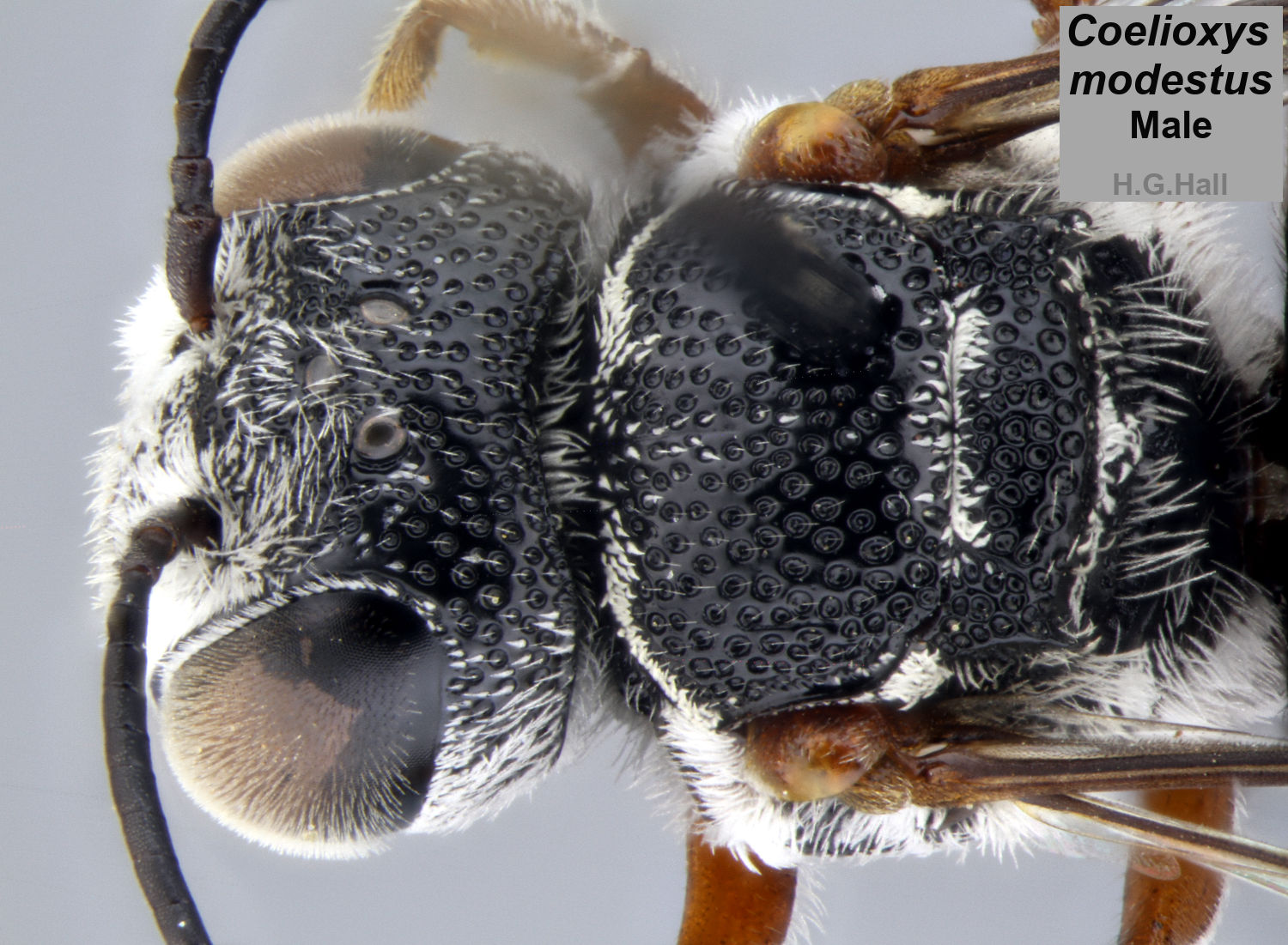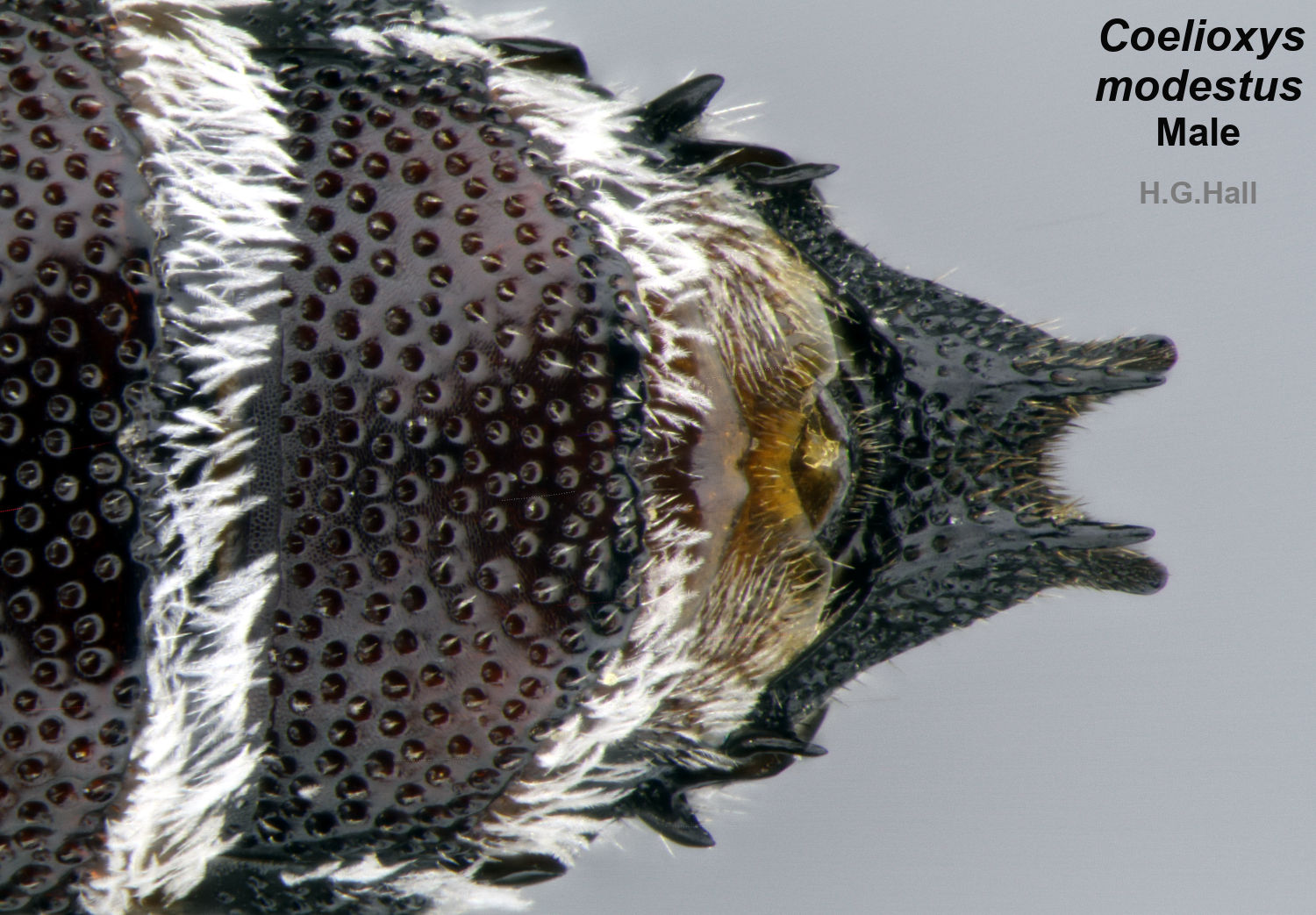Genus Coelioxys Latreille, 17 taxa
These are all parasitic bees, mostly parasitizing Megachile in Florida, but elsewhere, rarely parasitizing other genera. Females and males
have distinctive metasoma and resemble more slender, pointed Megachile in color and form. They are often more densely punctate and females lack scopa. The 17
taxa are widely distributed, being found where their hosts are located. As is usual for most parasitic species, they are widely under collected and are likely
found in many counties not listed here. A few taxa are described on the basis of one or two specimens of one sex. One endemic species, C. obtusiventris
and one subspecies (a color form), C. slossoni slossoni, are known solely from Florida.
Species are members of several subgenera, including:
Boreocoelioxys (3),
Cyrtocoelioxys (3),
Glyptocoelioxys (2),
Neocoelioxys (3),
Synocoelioxys (2), and
Xerocoelioxys (5).
Species formerly in subgenera Acrocoelioxys, Coelioxys, and Haplocoelioxys have been recently reclassified and moved to the other subgenera.
Key references to Florida Coelioxys
Baker, J. R. 1975. Taxonomy of five Neartic subgenera of Coelioxys
(Hymenoptera: Megachilidae). The University of Kansas Science Bulletin 50(12):
649-730.
Reclassification of the Coelioxys subgenera: Filho, L. C. R. and Packer, L. 2016. Phylogeny of the cleptoparasitic Megachilini genera
Coelioxys and Radoszkowskiana, with the description of six new subgenera in Coelioxys (Hymenoptera:
Megachilidae). Zoological Journal of the Linnean Society 1-60.
A key to subgenera is provided in Michener (2000), page 528-529. This key is
not used here but is a good key to learn the main subgenera if interested.
The subgenera key here is an abbreviated version for the Florida Coelioxys taken from Baker, Mitchell, and largely Filho and Packer.
Key to subgenera of females of Coelioxys in Florida
1. Postgradular grooves of sixth metasomal sternum and often of third metasomal sternum complete, uninterrupted....2
Postgradular grooves of both second metasomal tergum and third metasomal tergum interrupted medially....3
2. Sixth metasomal sternum gradually tapering towards apex and conspicuously notched subapically, notches acute....
Boreocoelioxys
Sixth metasomal sternum constricted near midlength, sometimes abruptly so, but lacking subapical notches or with obtuse notches....
Xerocoelioxys
3. Median ocellus surrounded by a swollen, dull, nearly impunctate area....4
Median ocellus generally not surrounded by a swollen area....5
4. Sixth metasomal sternum broadly rounded to acute apically, not notched subapically....
Synocoelioxys
Sixth metasomal sternum apically or subapically notched. Supraclypeal area elevated medially,
forming a rounded ridge....
Neocoelioxys
5. Sixth metasomal tergum ending in a short, upturned process....
Cyrtocoelioxys
Apical tip of sixth metasomal tergum not upturned. Scutellum keeled dorsomedially....
Glyptocoelioxys
Key to subgenera of males of Coelioxys in Florida
1. Postgradular grooves of sixth metasomal sternum and often of third metasomal sternum complete, uninterrupted ....2
Postgradular grooves of both second metasomal tergum and third metasomal tergum interrupted medially....3
2. Postgradular area of second metasomal tergum with sublateral, elliptical, slender fovea on eachside....
Boreocoelioxys
Postgradular area of second metasomal tergum not foveate, but sometimes with sublateral, transverse, densely punctate area on each side....
Xerocoelioxys
3. Median ocellus surrounded by a swollen, dull, nearly impunctate area....4
Median ocellus generally not surrounded by a swollen area....5
4 Sixth metasomal tergum with dorsal spines modified into a crenulate plate....
Synocoelioxys
Sixth metasomal tergum with two distinct dorsal spines....
Neocoelioxys
5. Scutellum with impunctate, longitudinal median keel. Fourth metasomal sternum, apical margin, deeply emarginate,
forming a U-shaped process, its arms thick, robust....
Glyptocoelioxys
Scutellum without impunctate median keel. Fourth metasomal sternum margin not deeply emarginate....
Cyrtocoelioxys






























